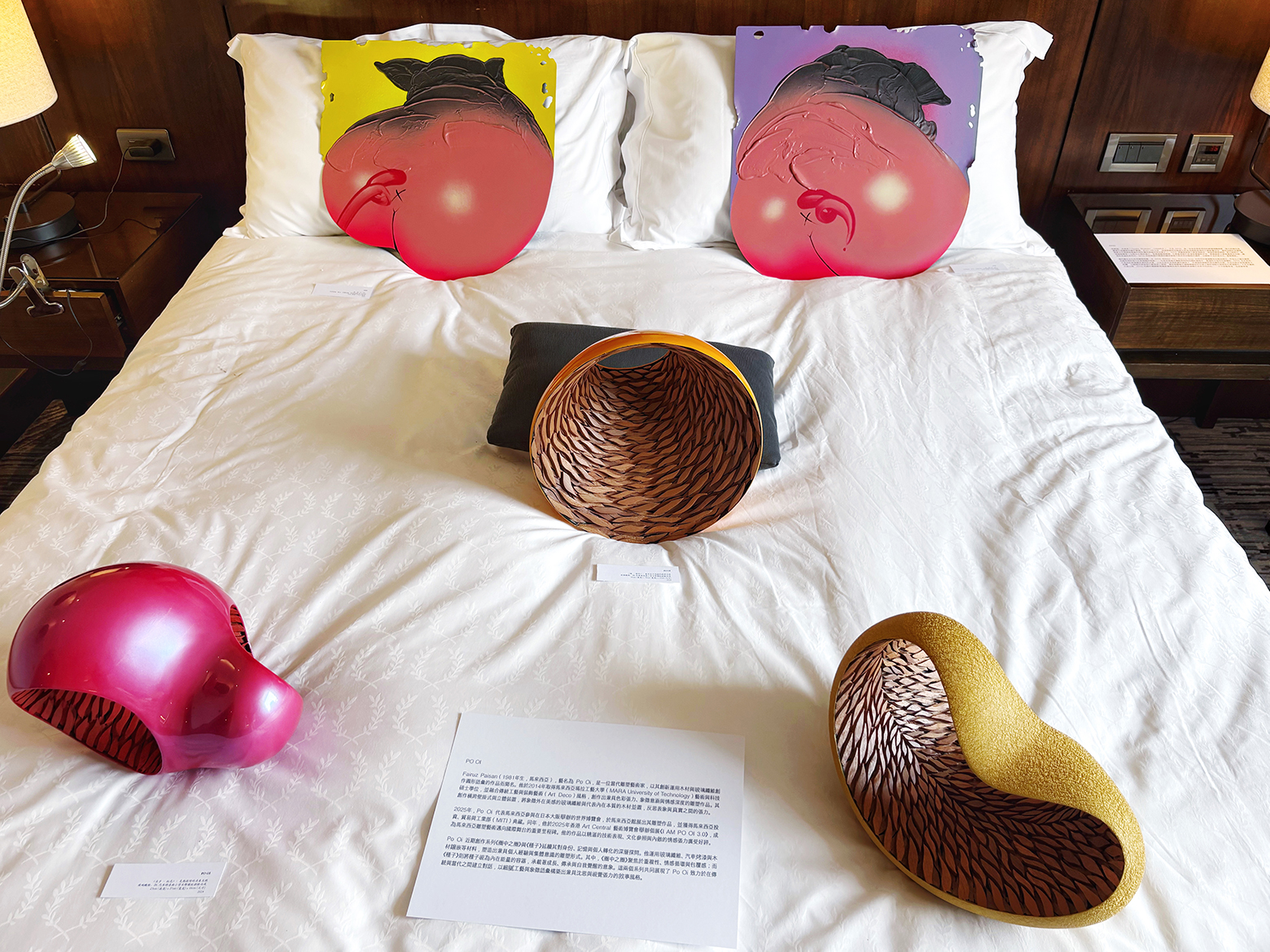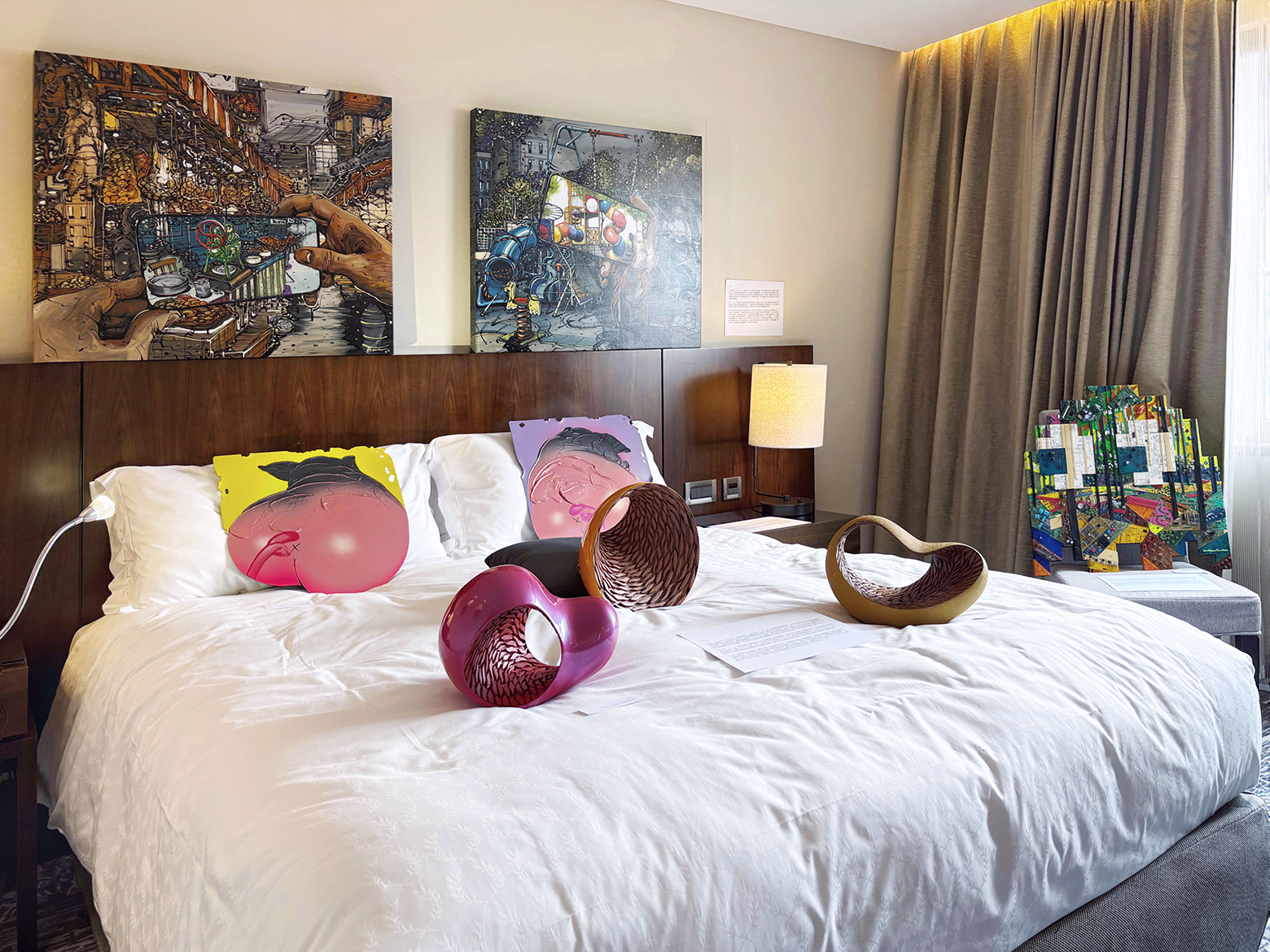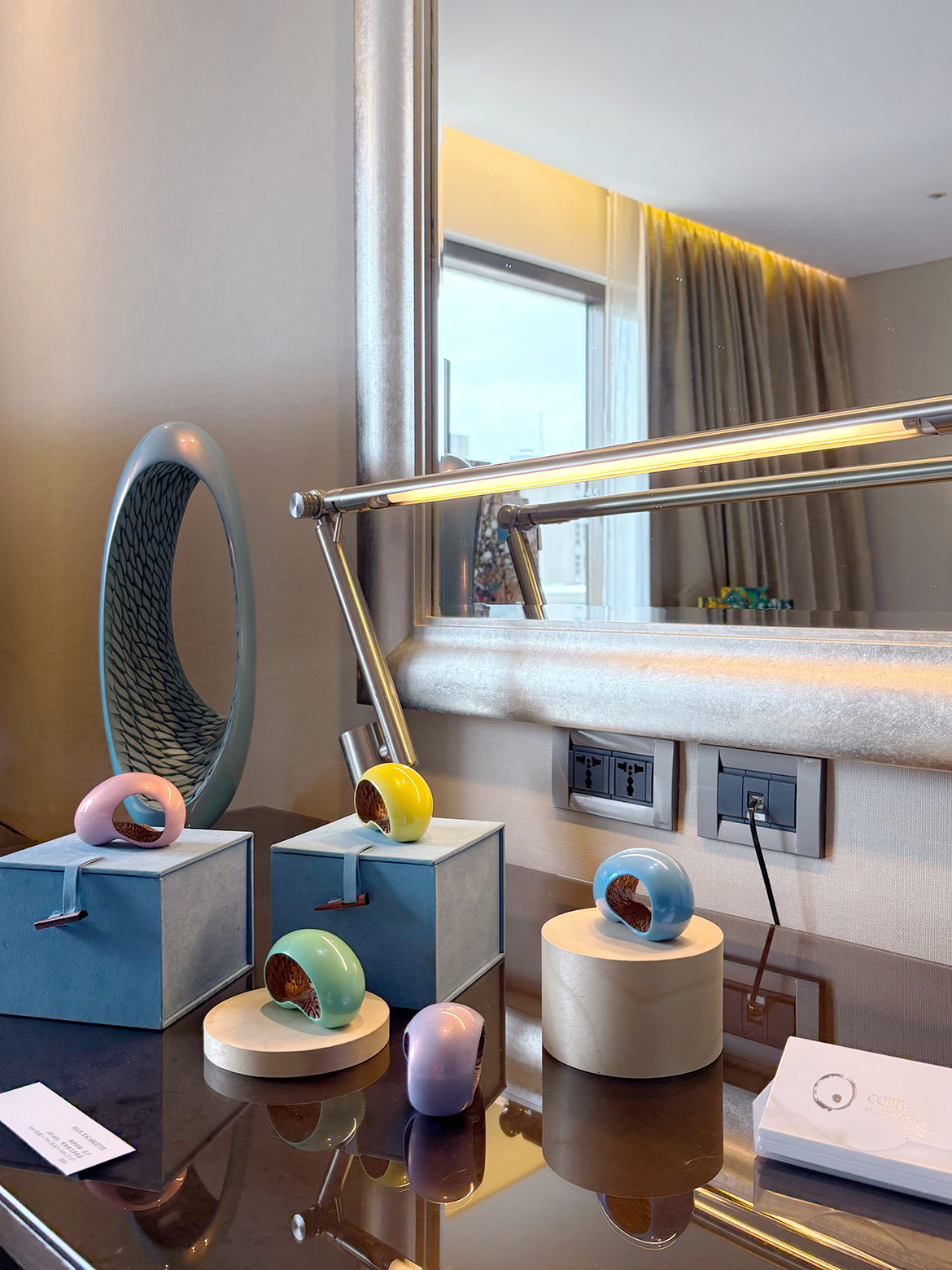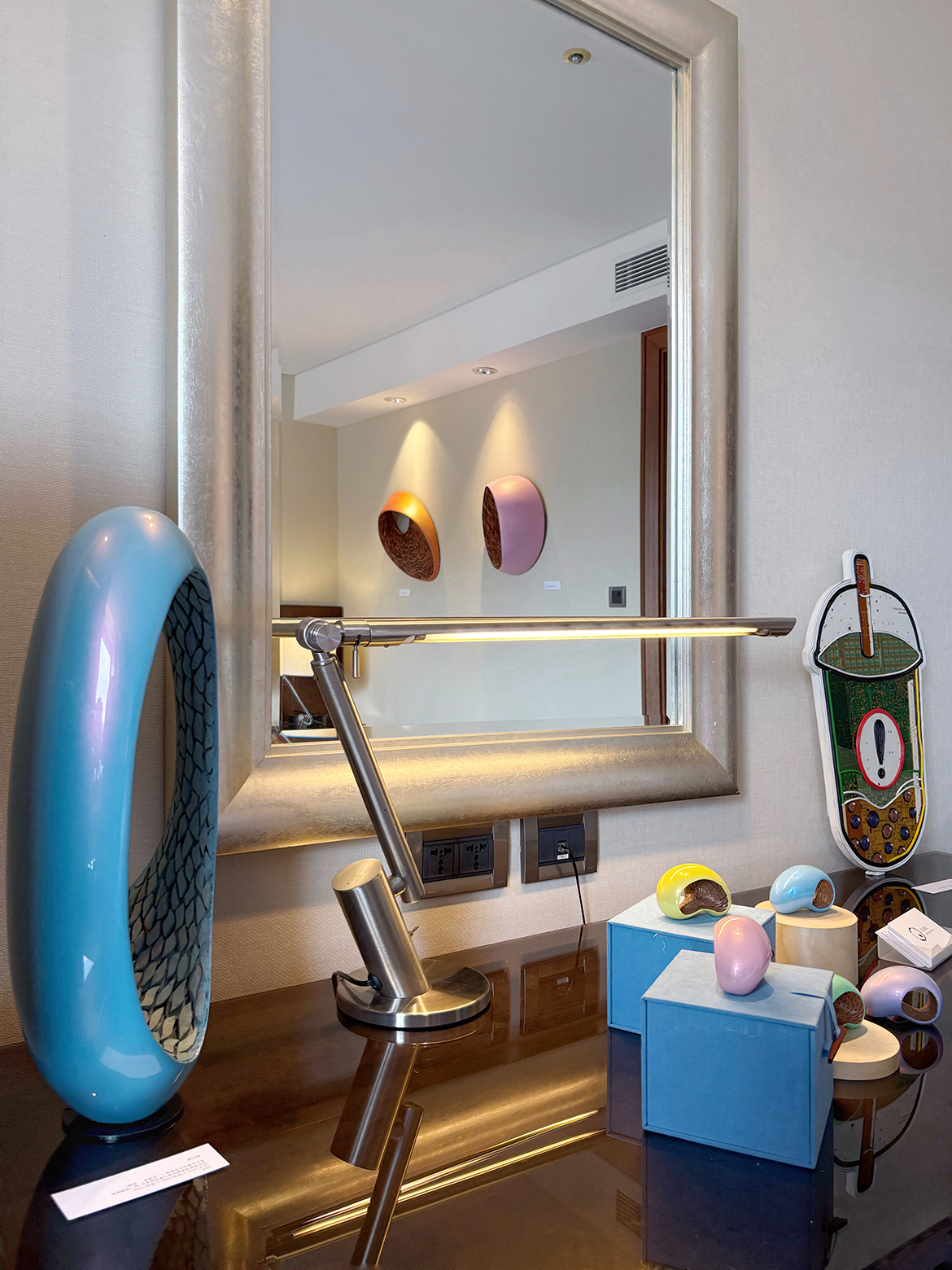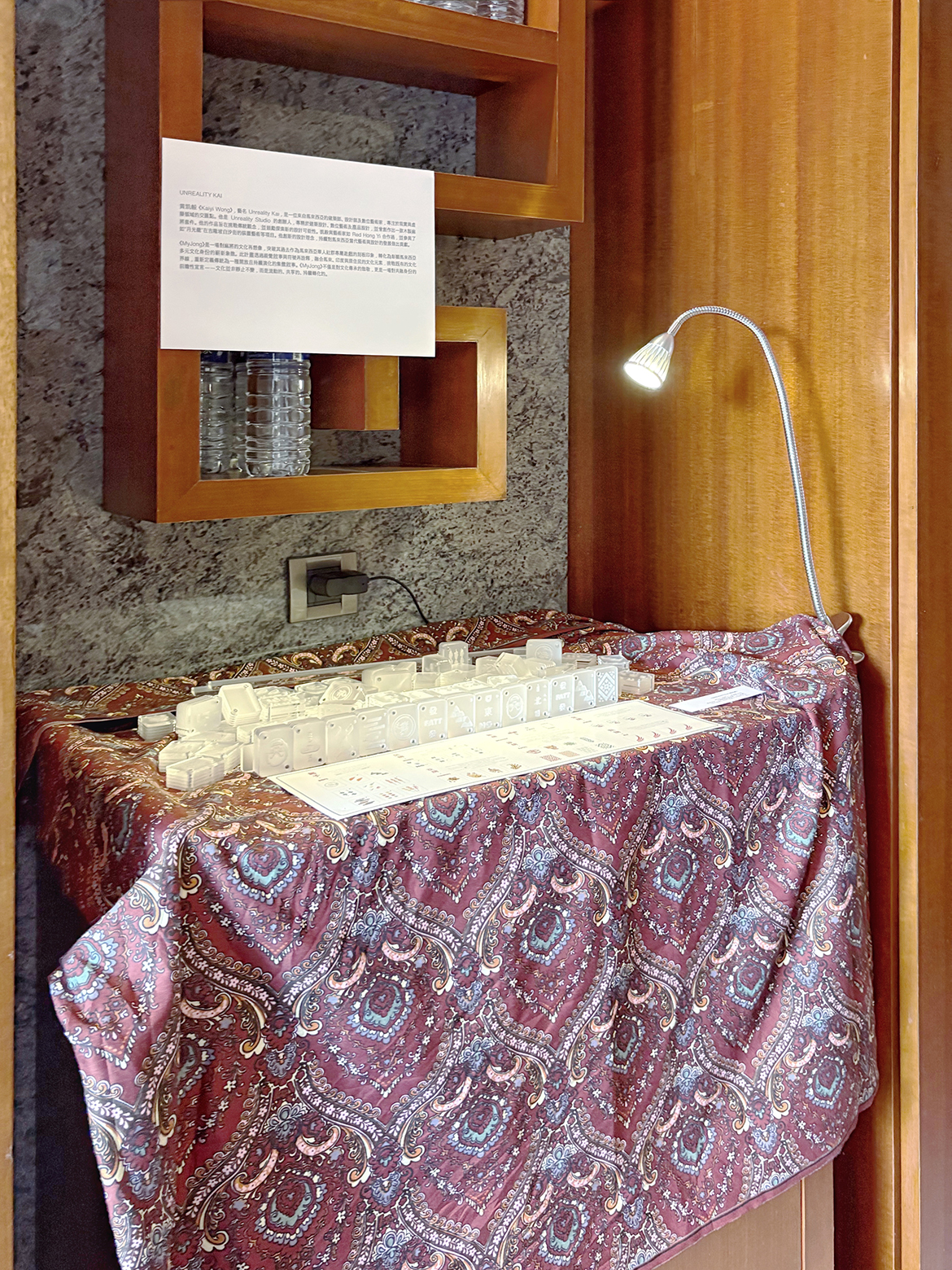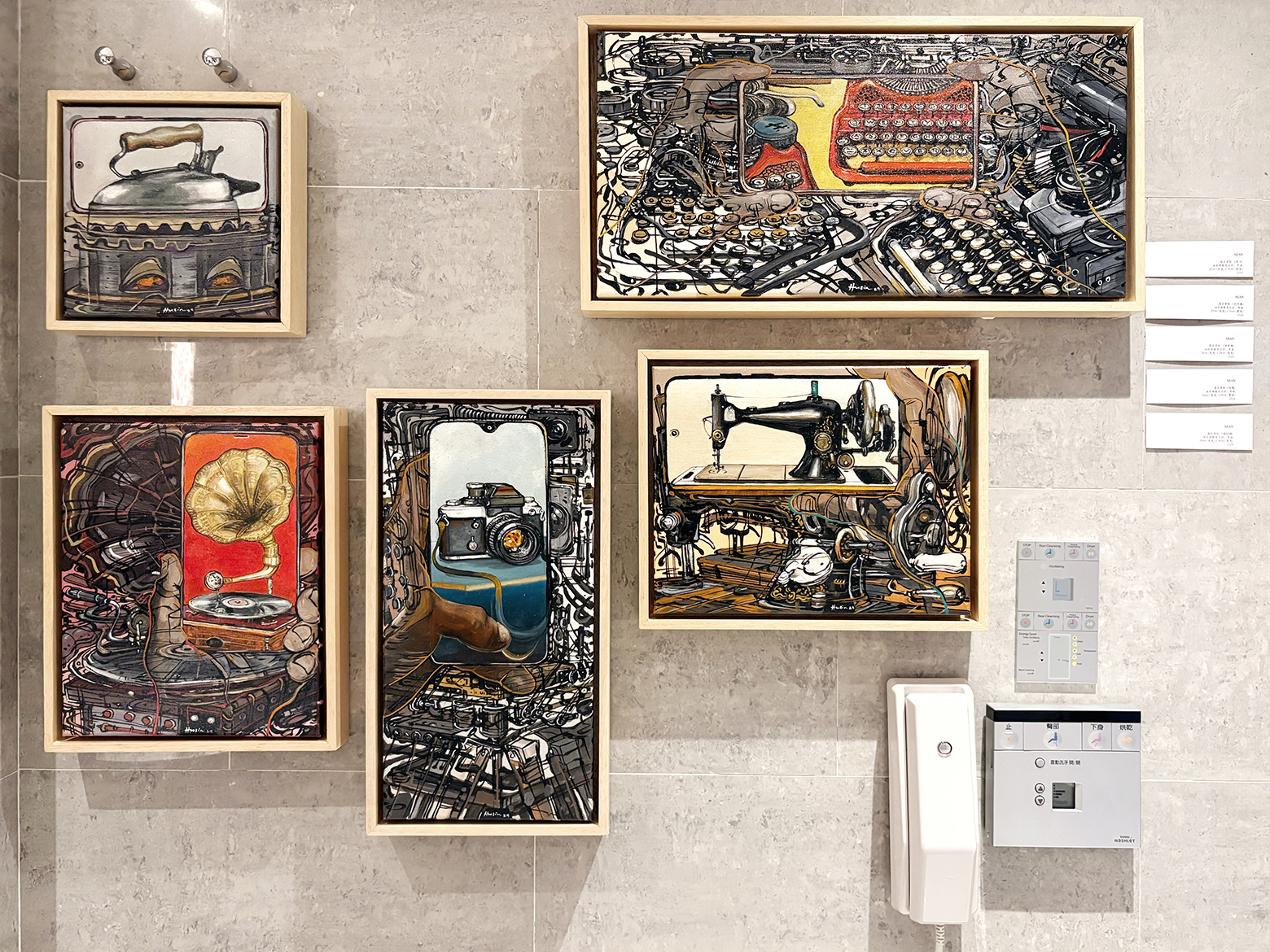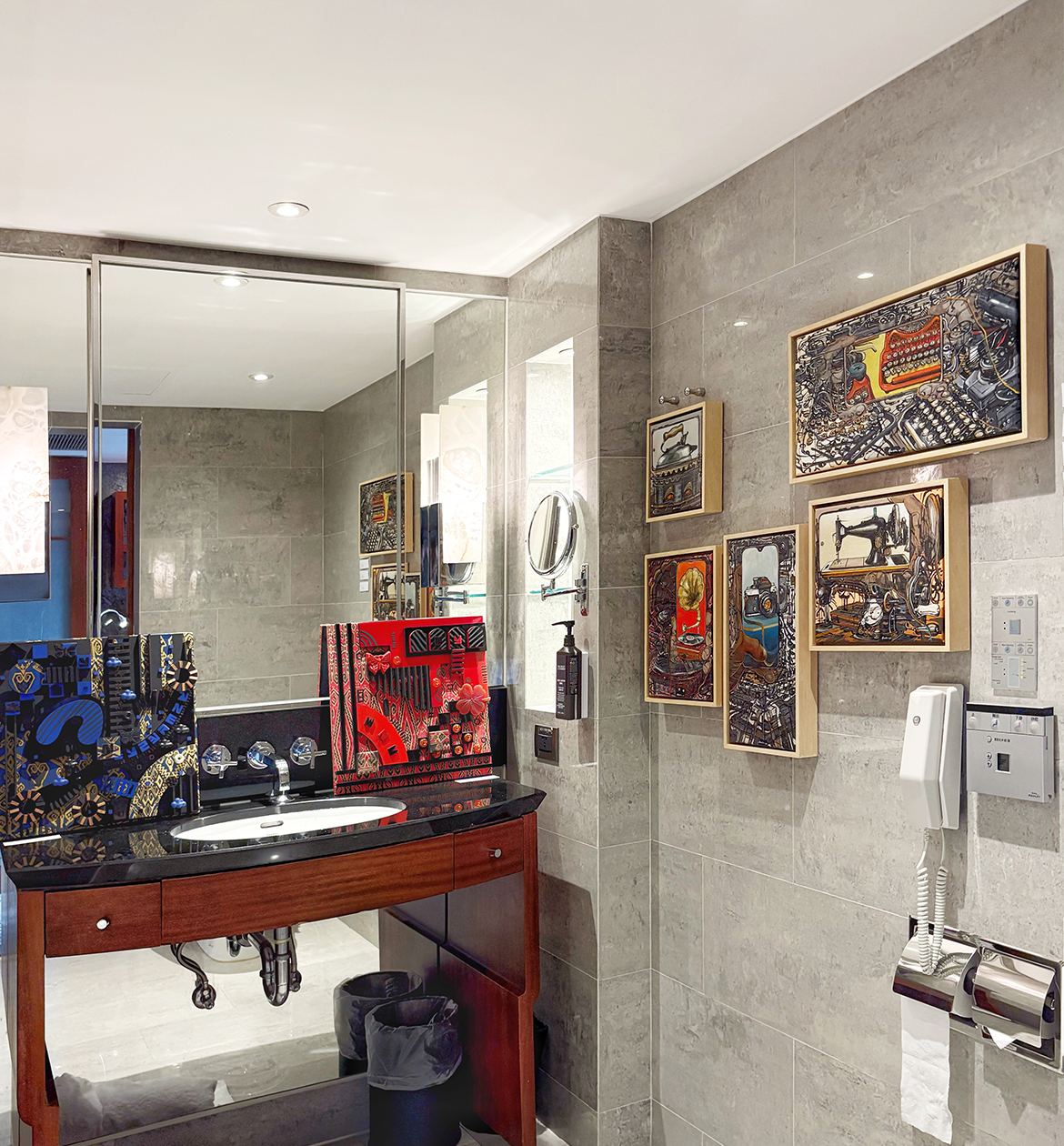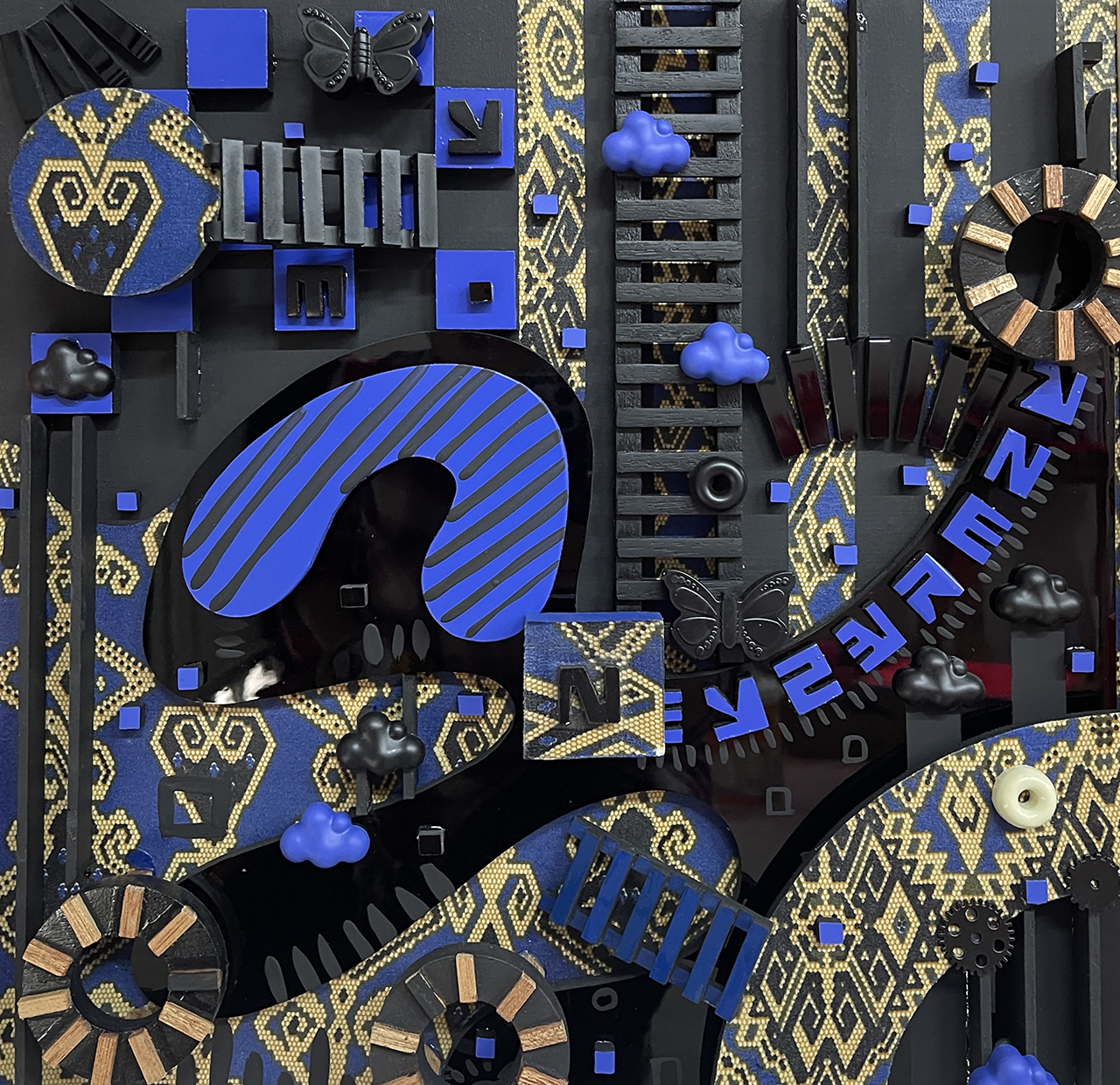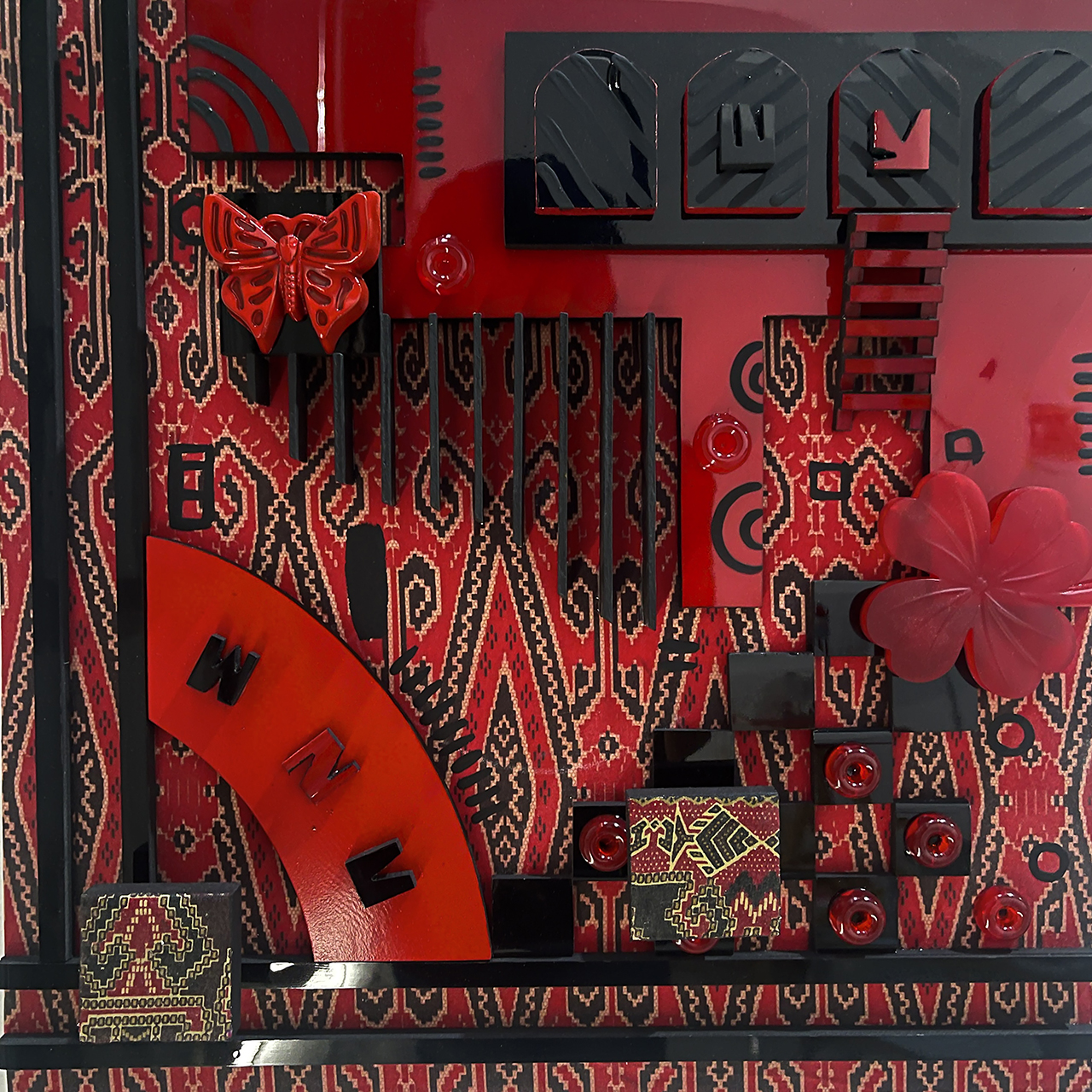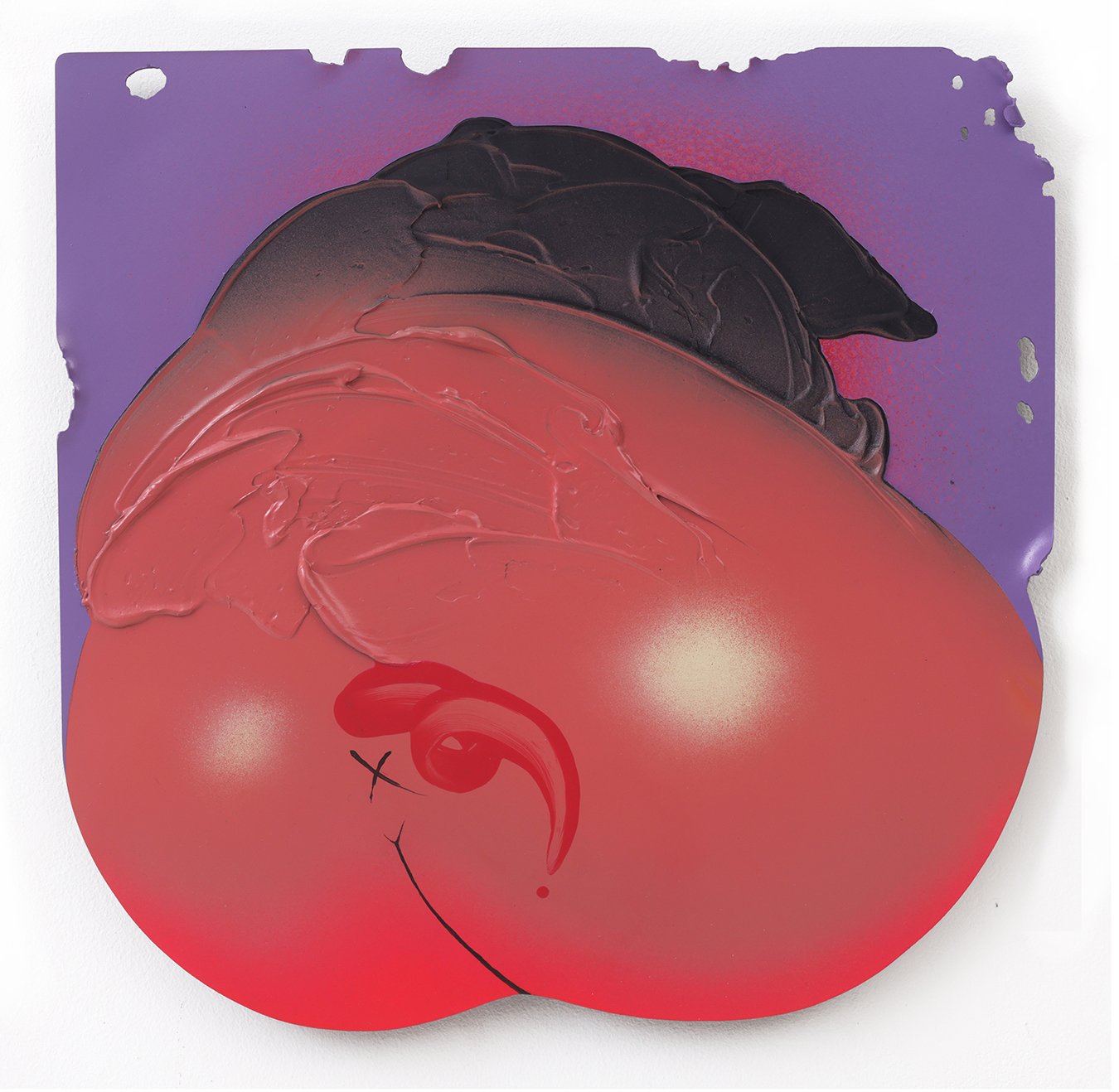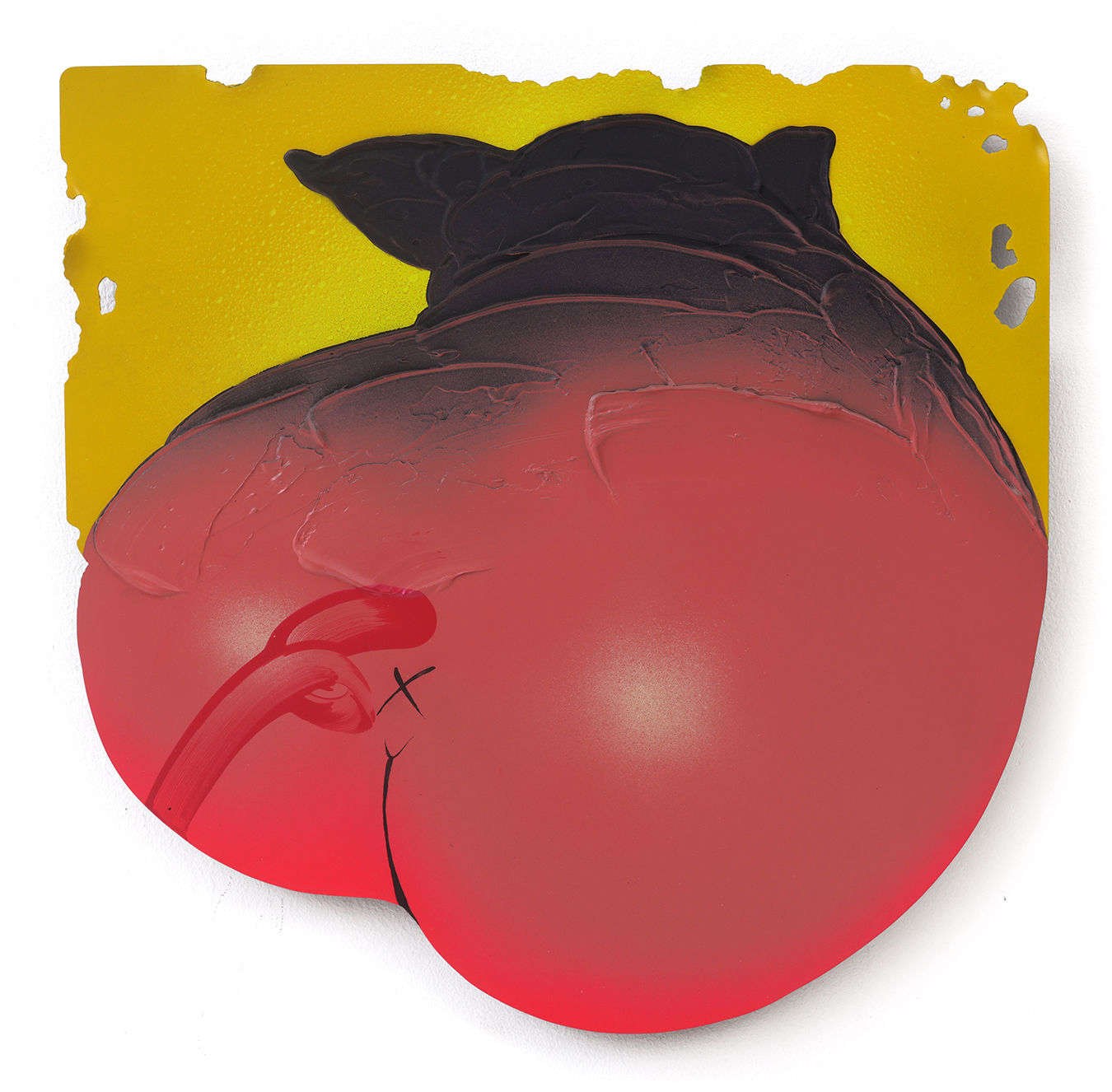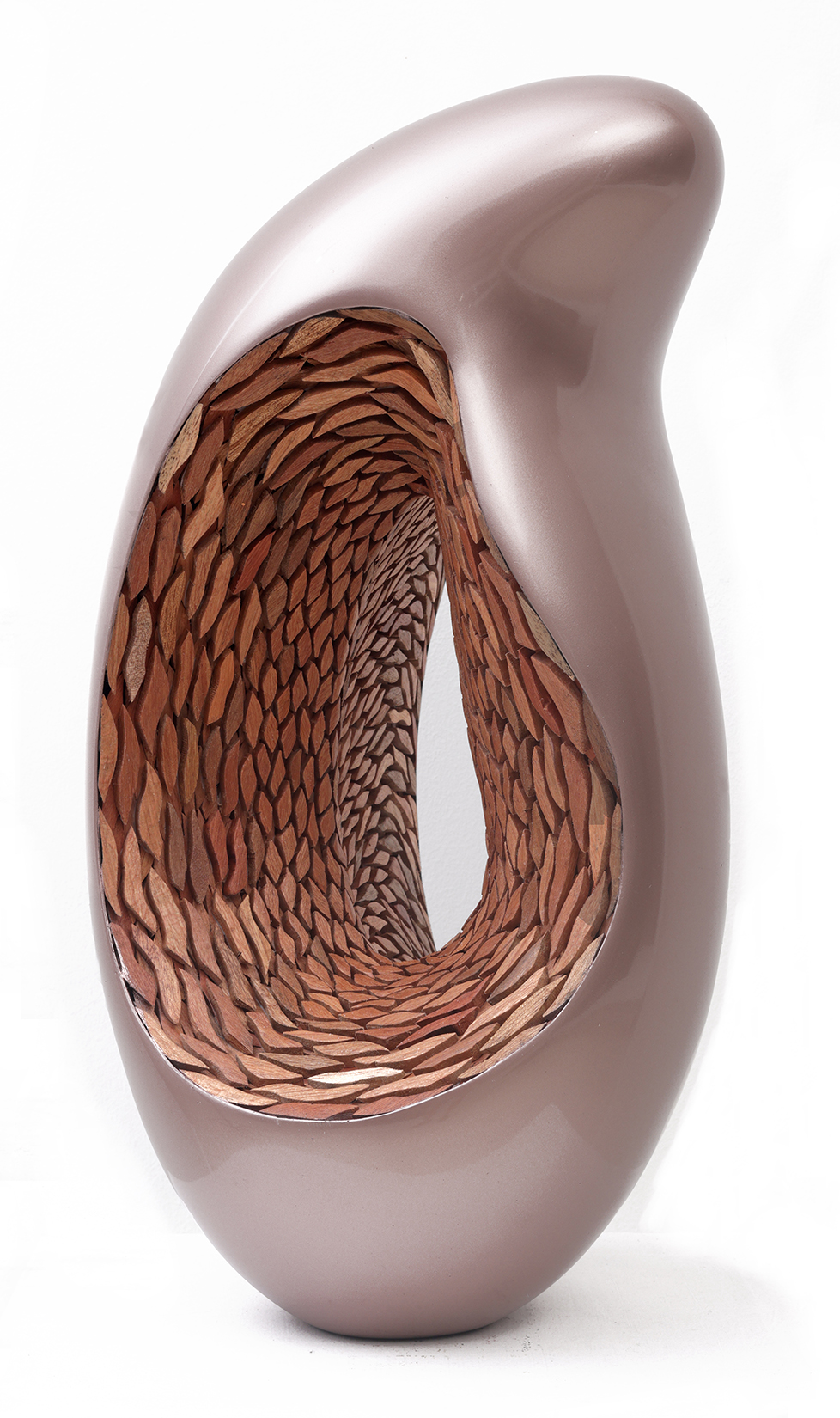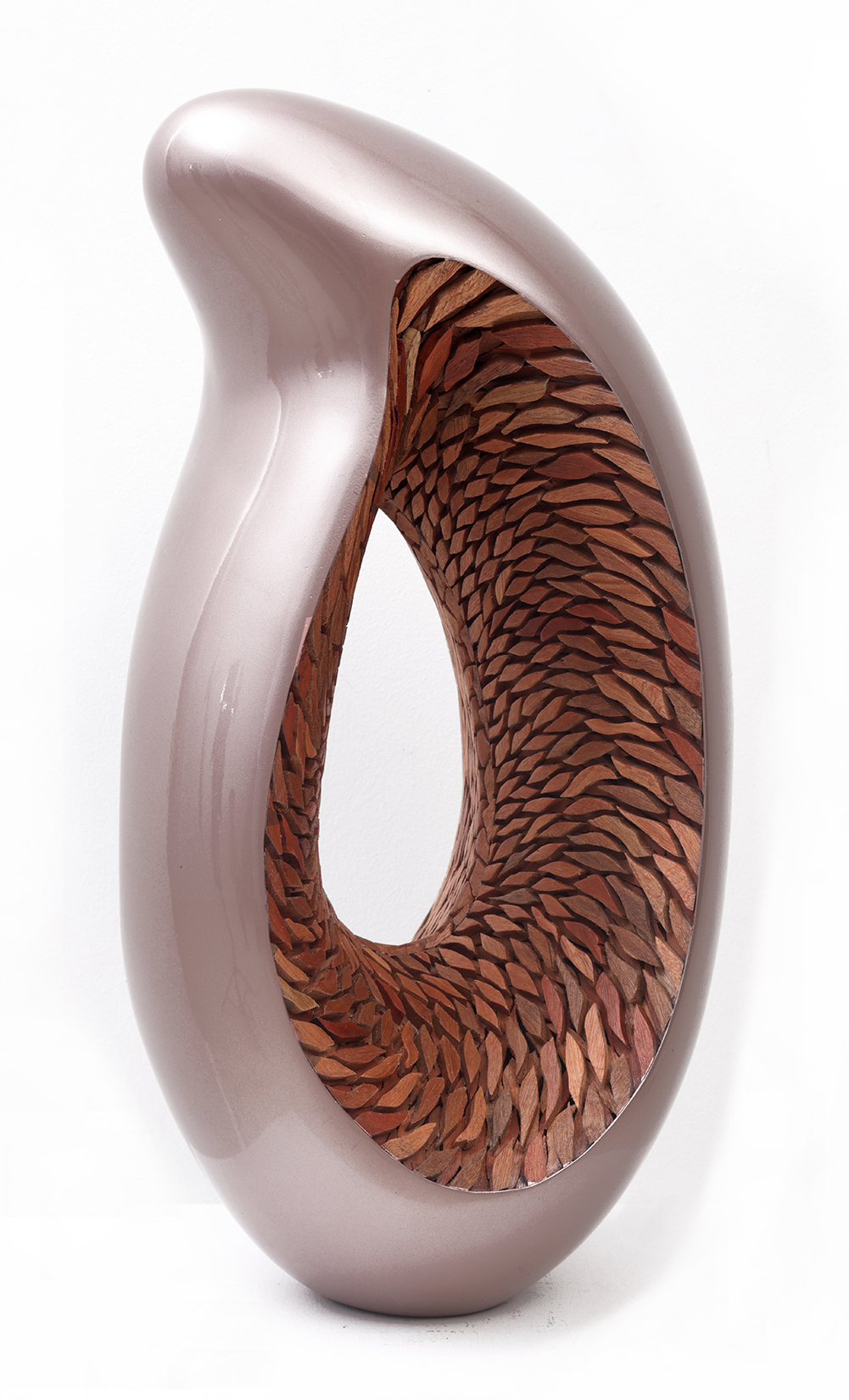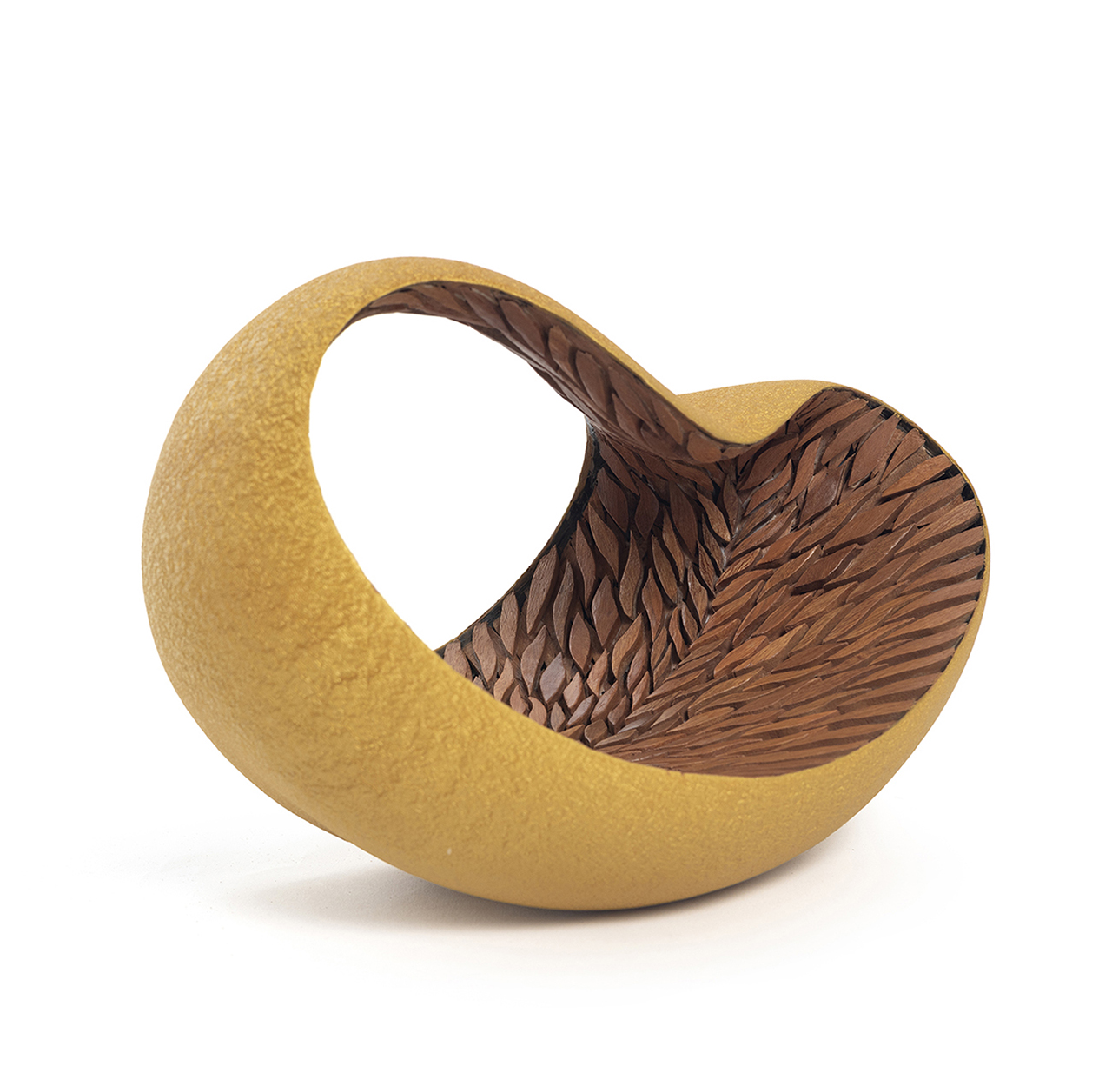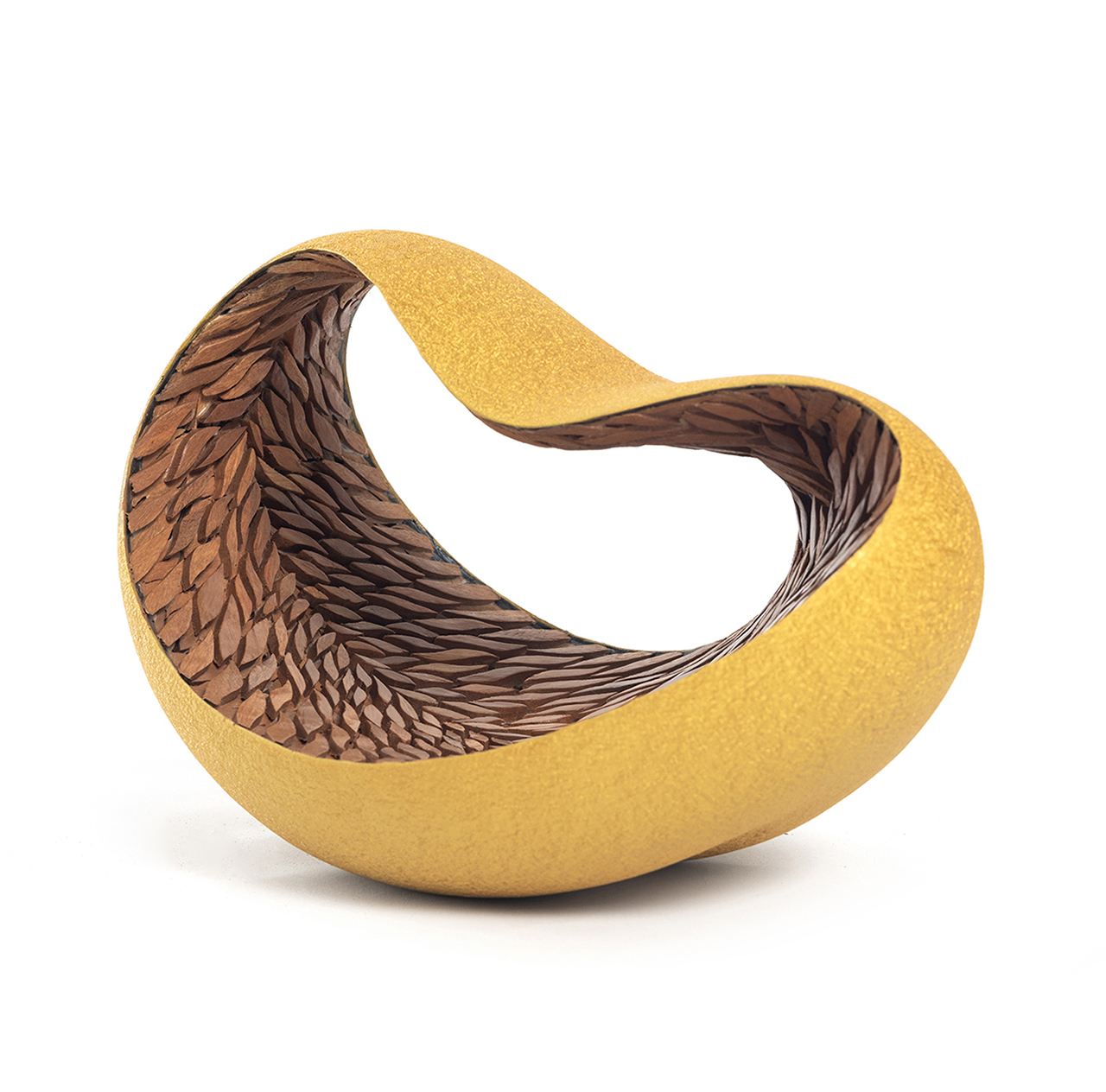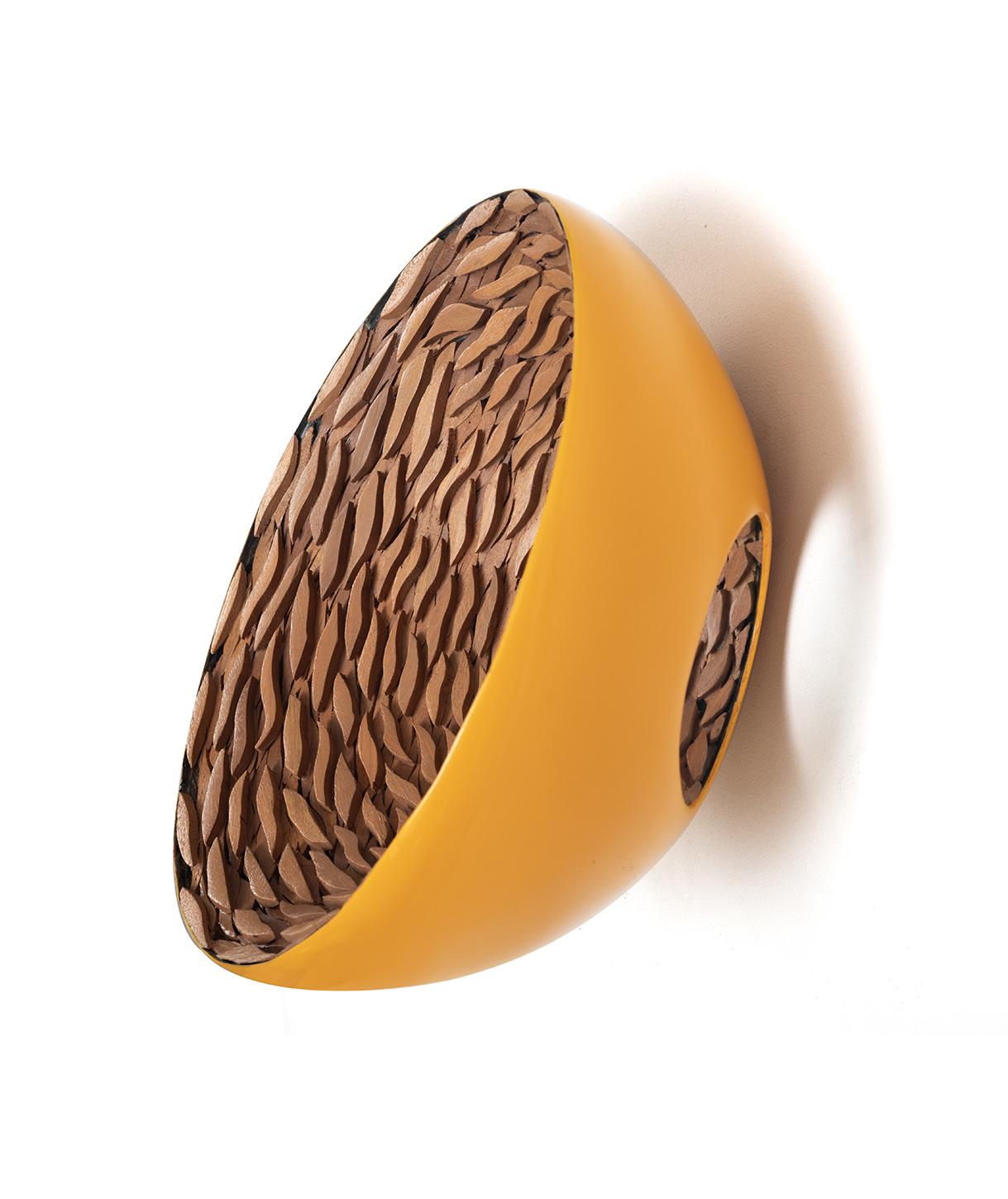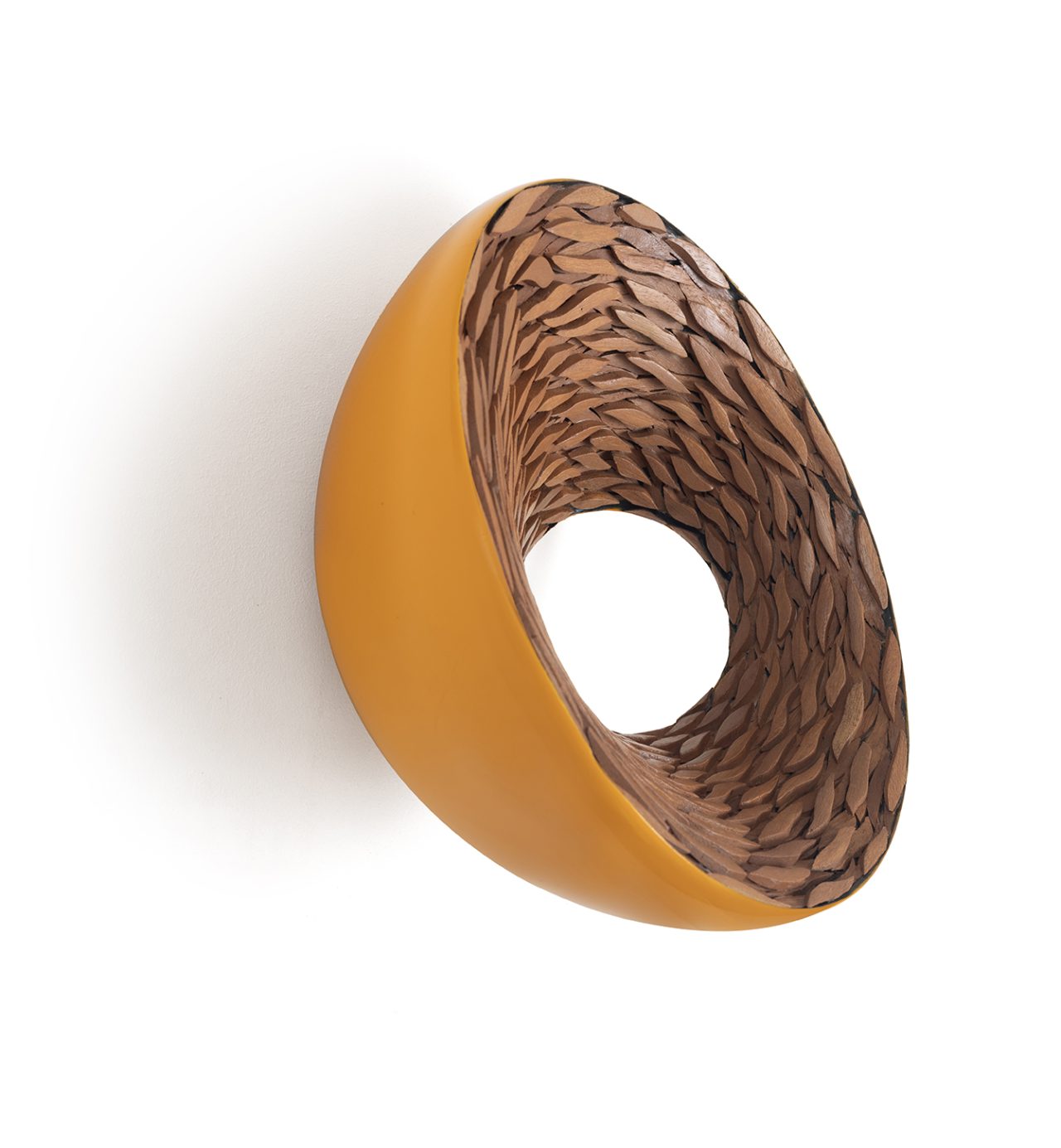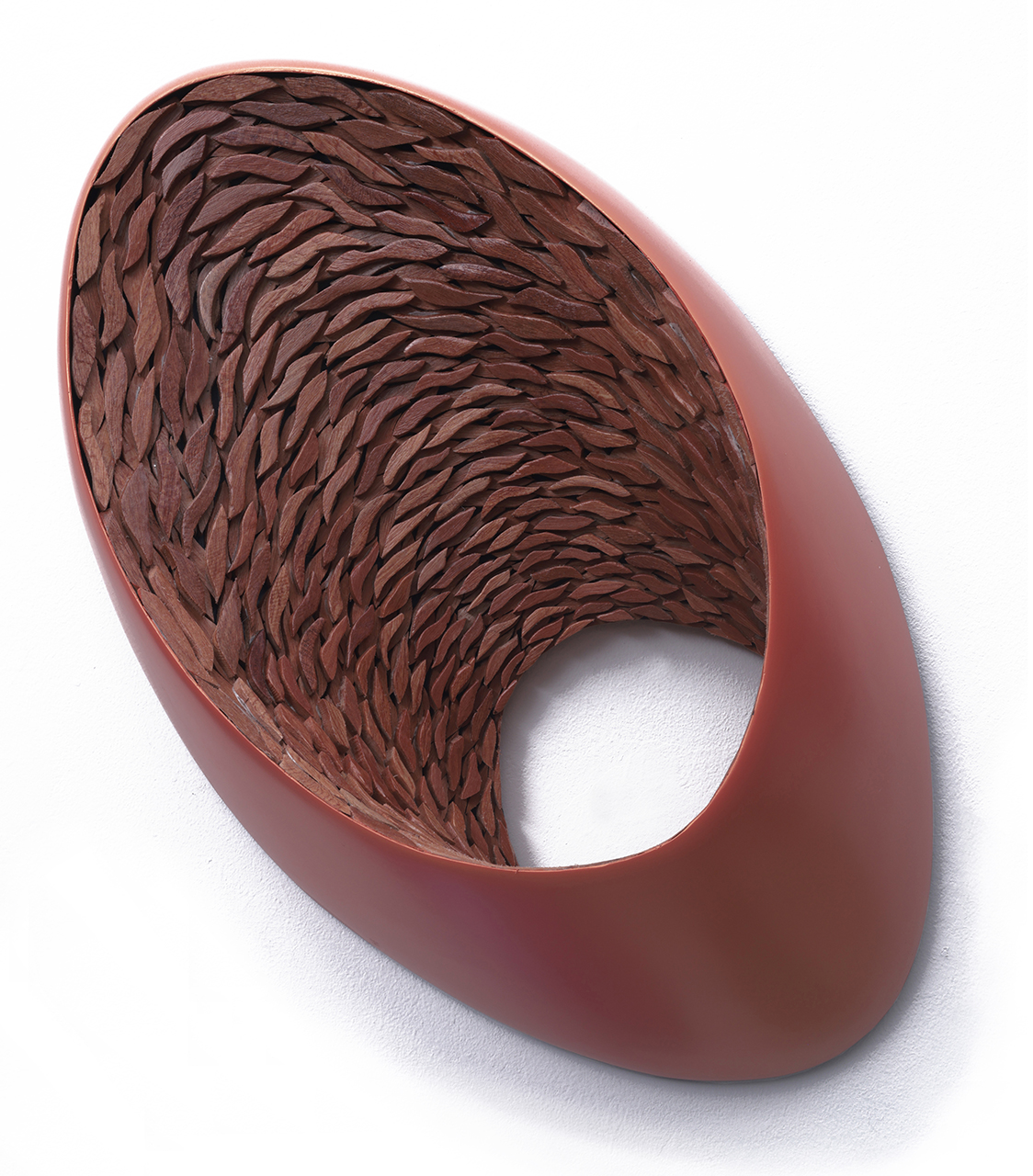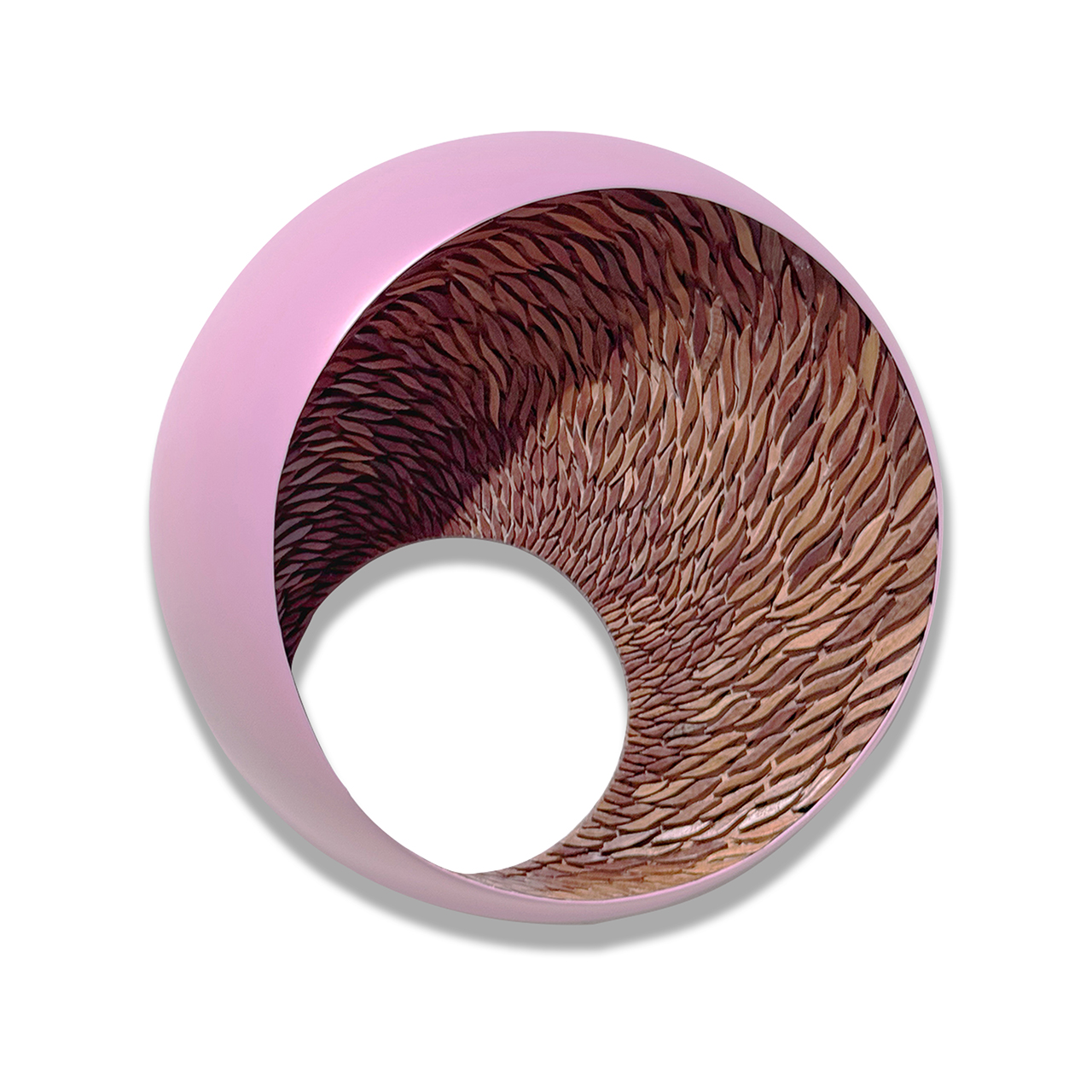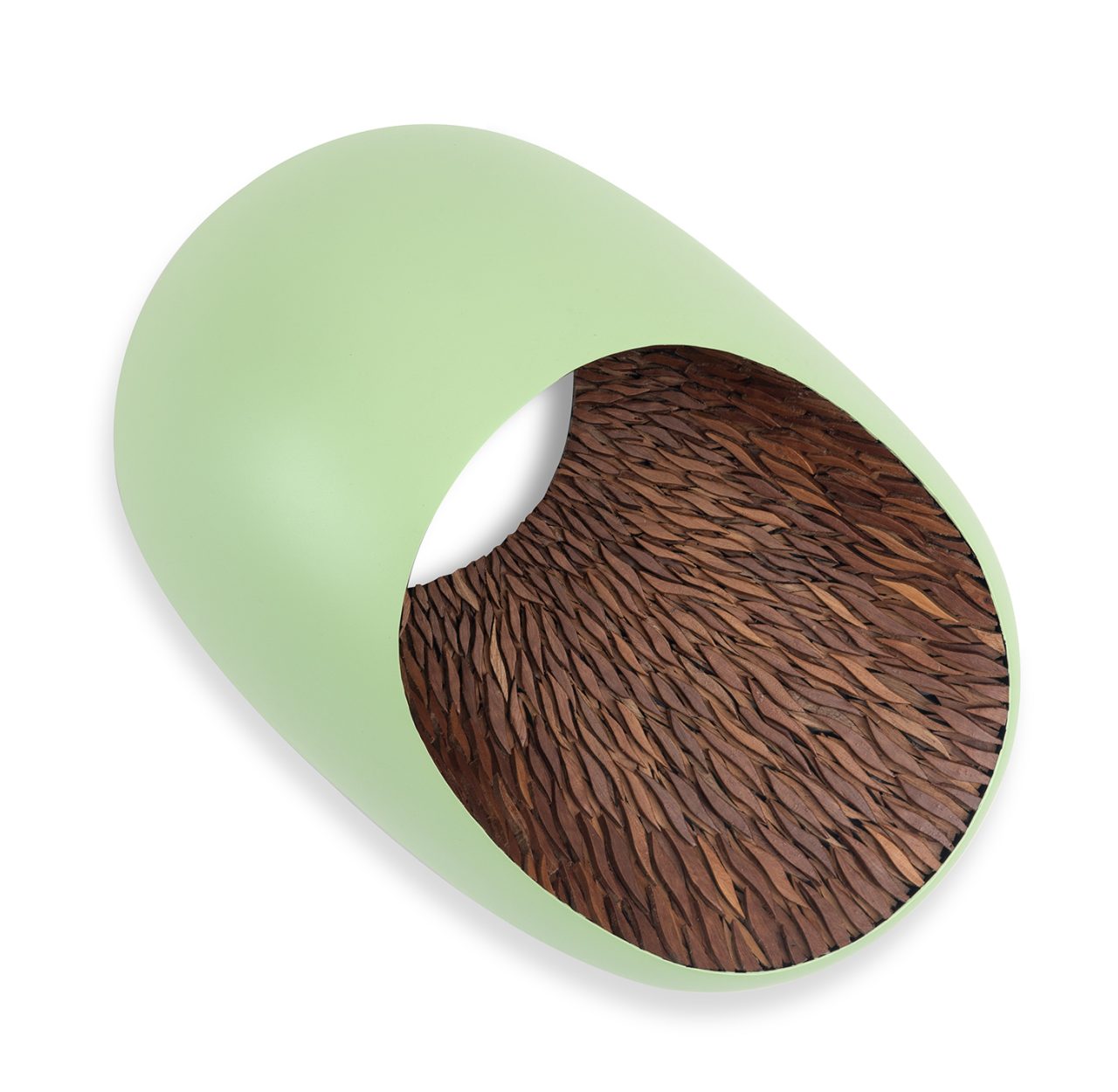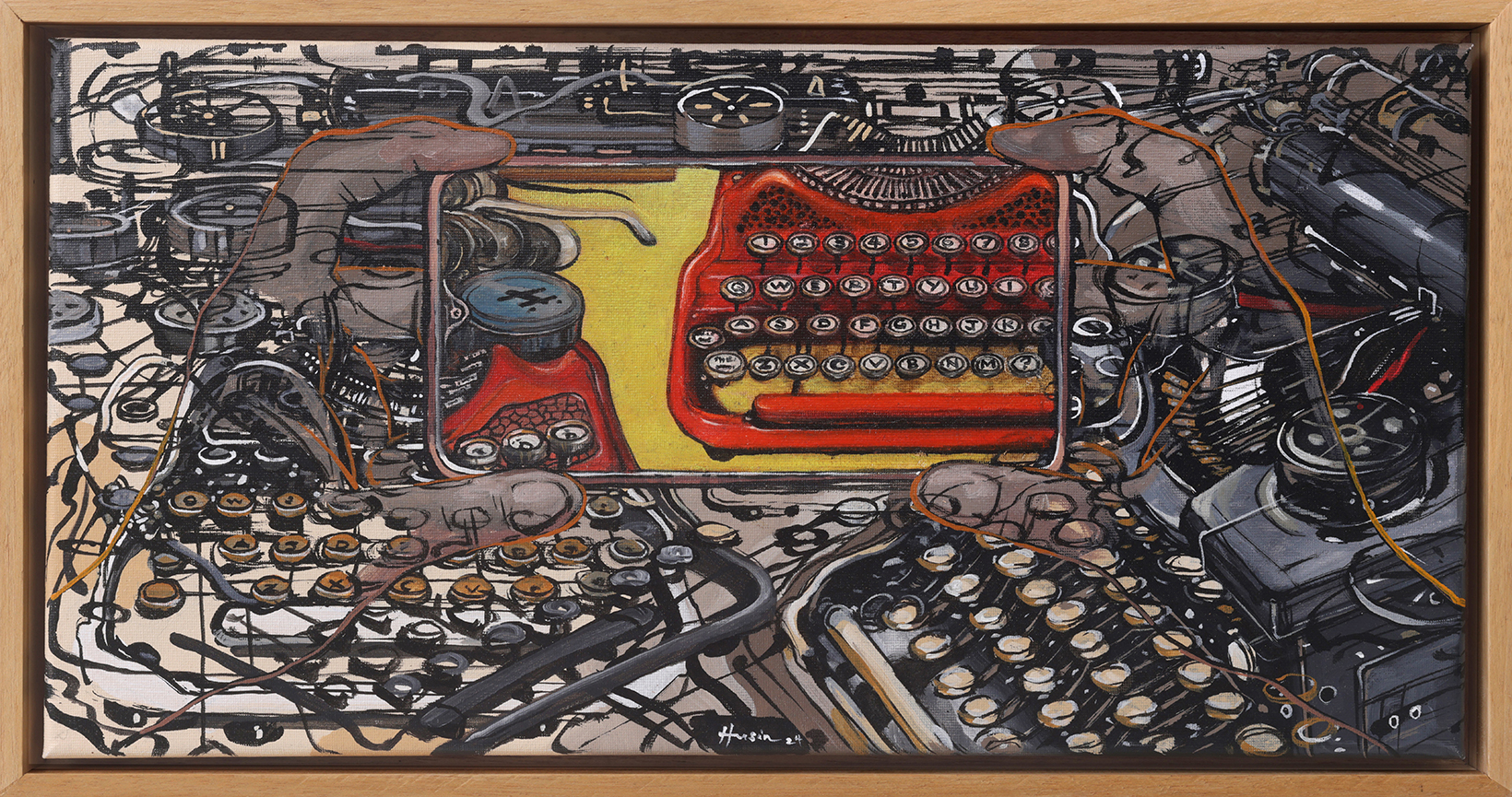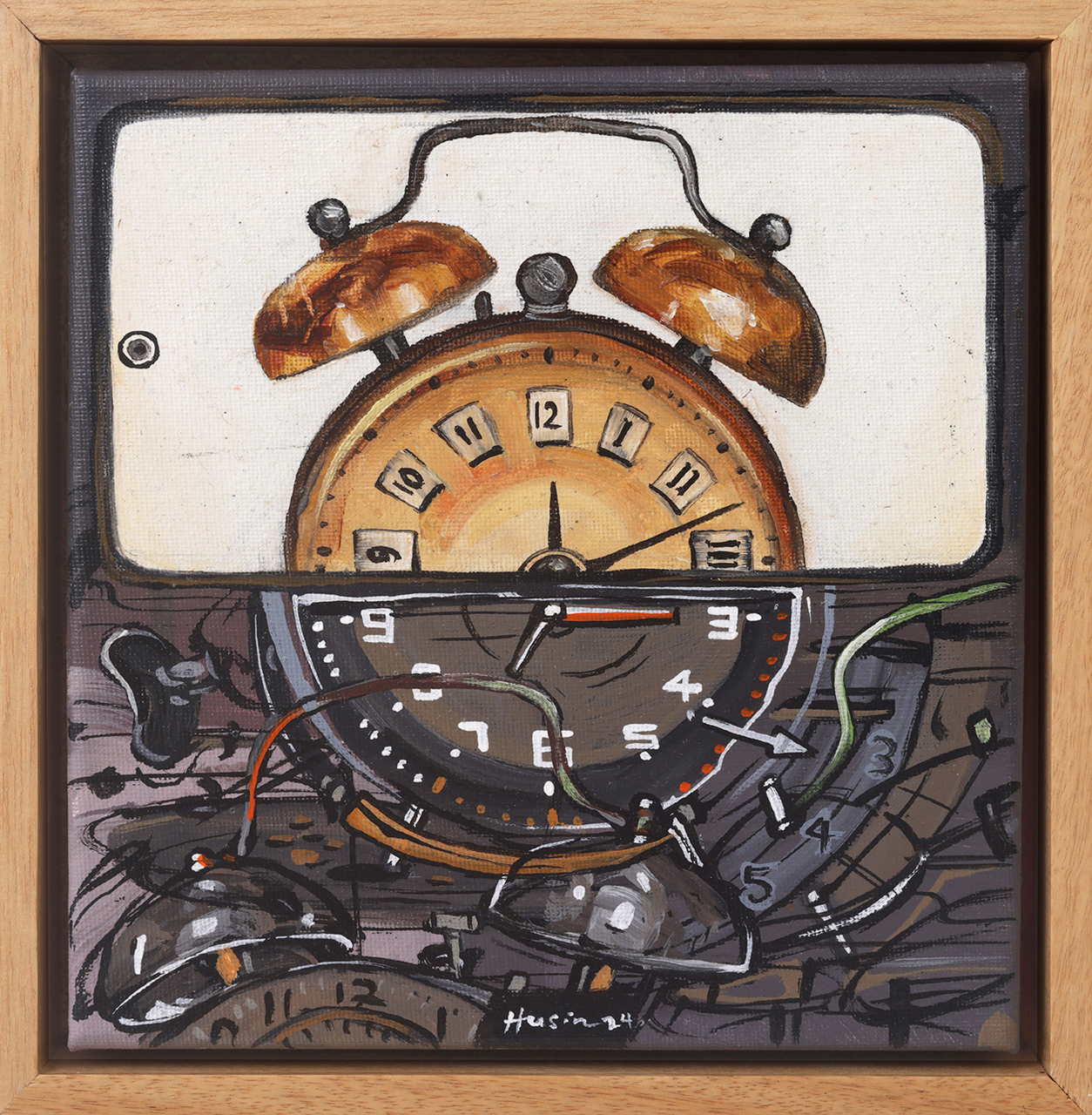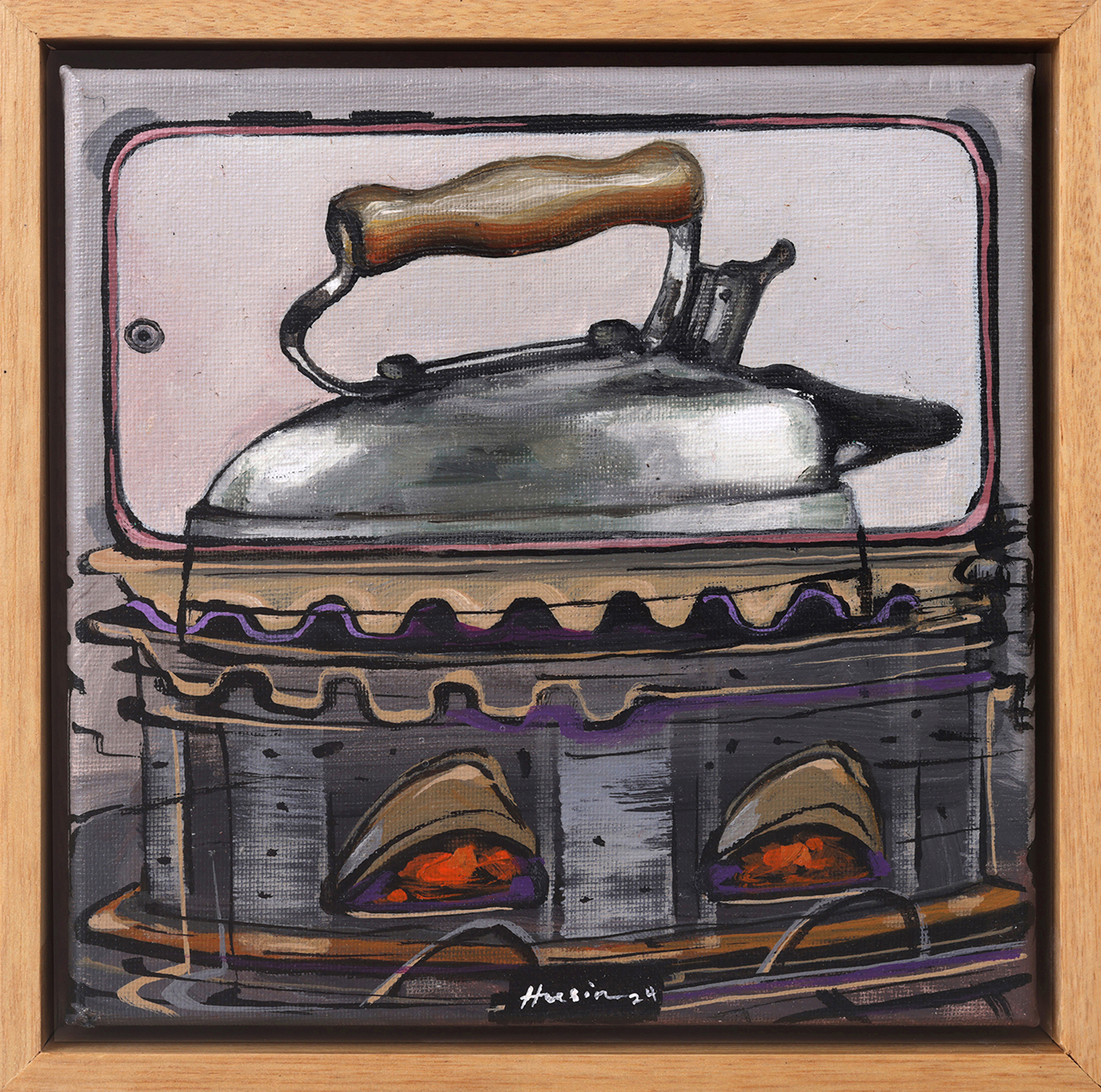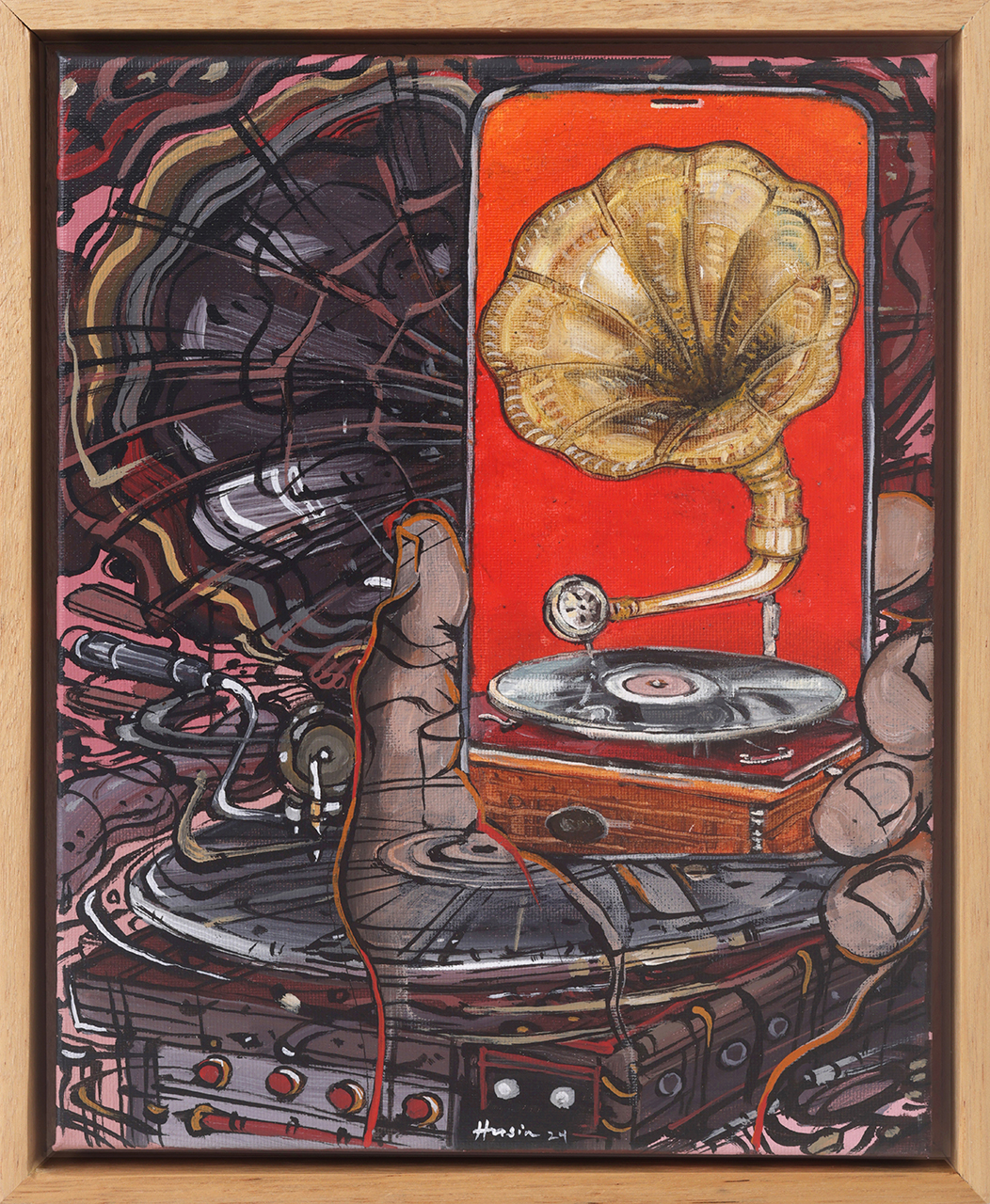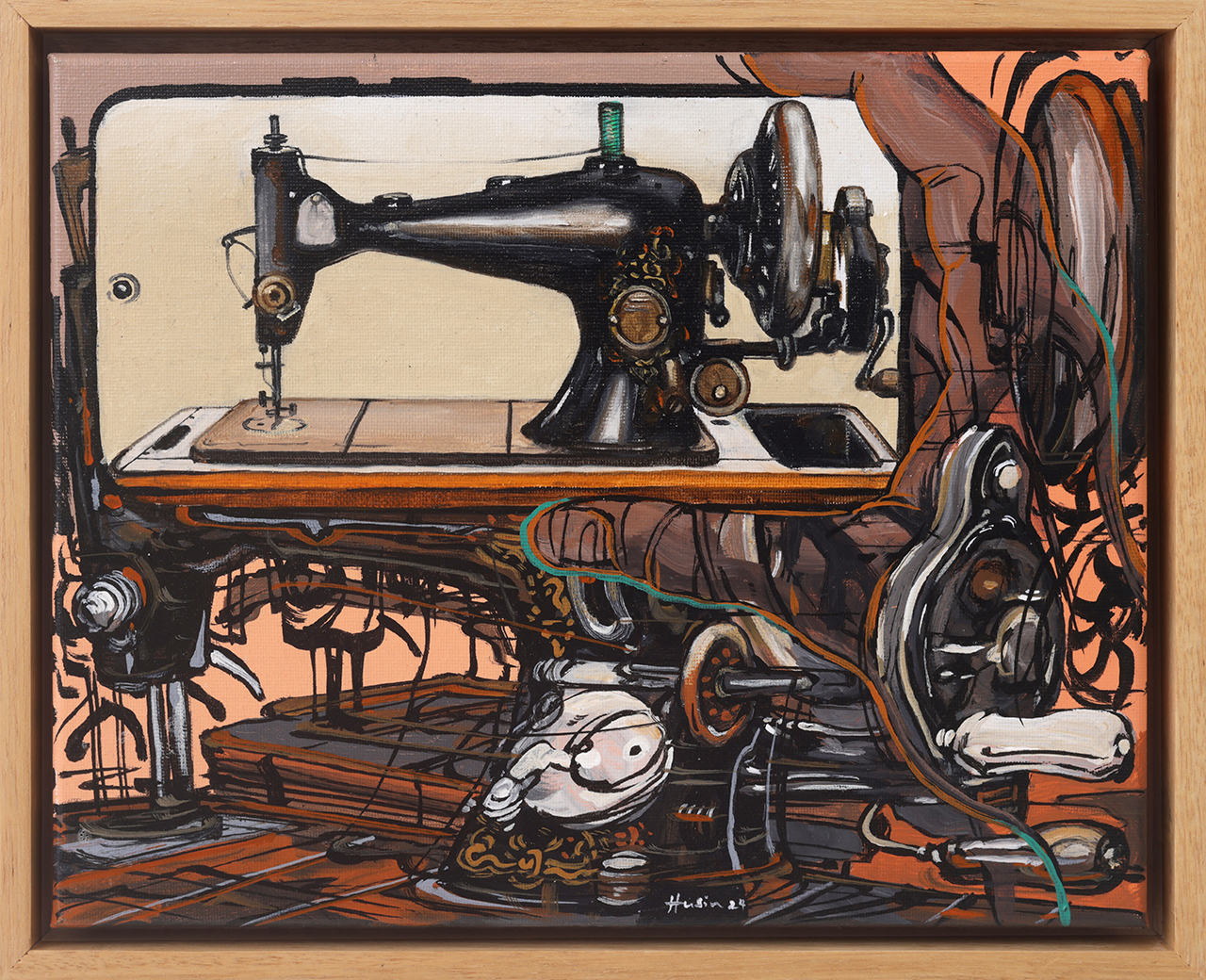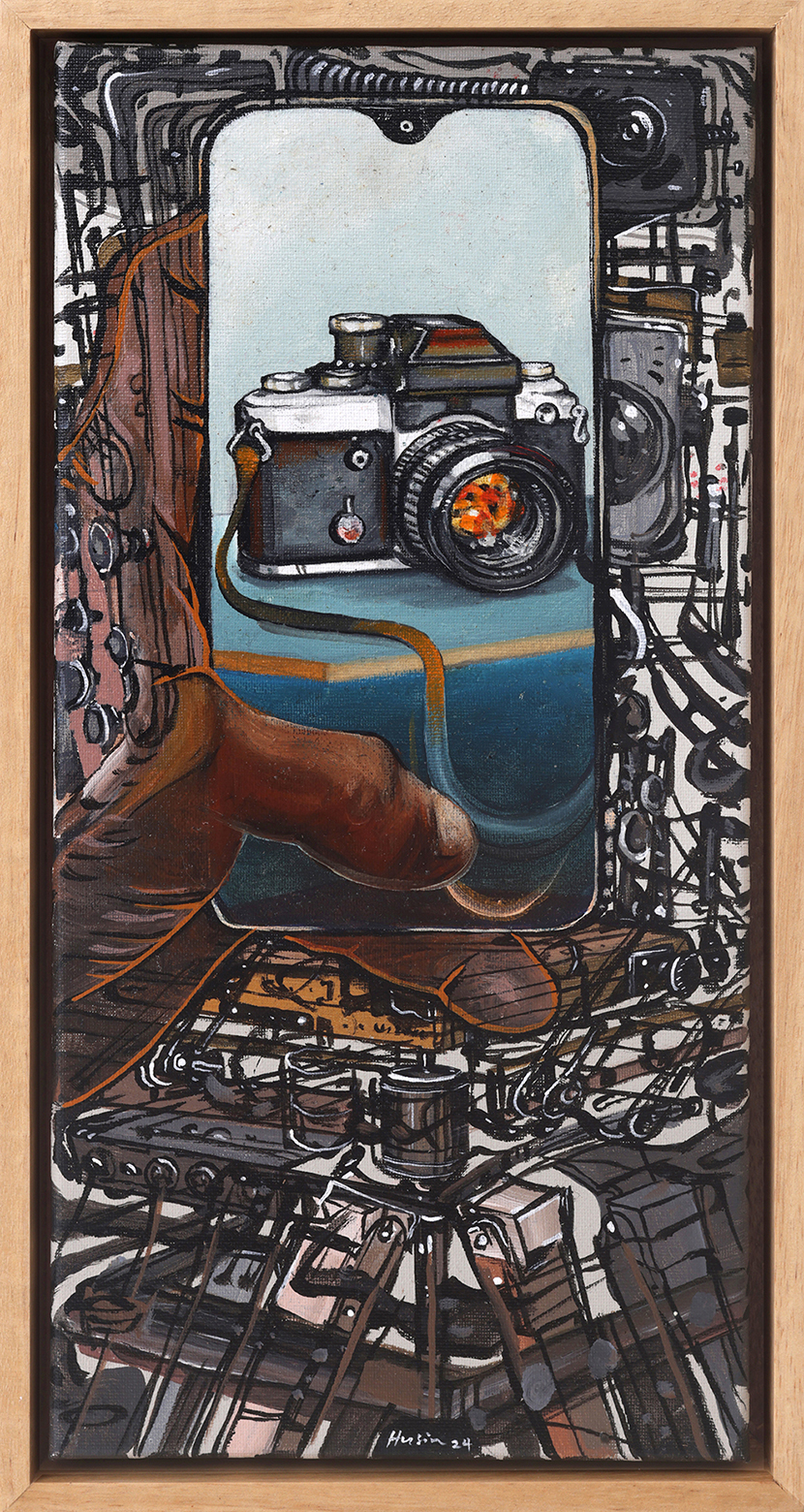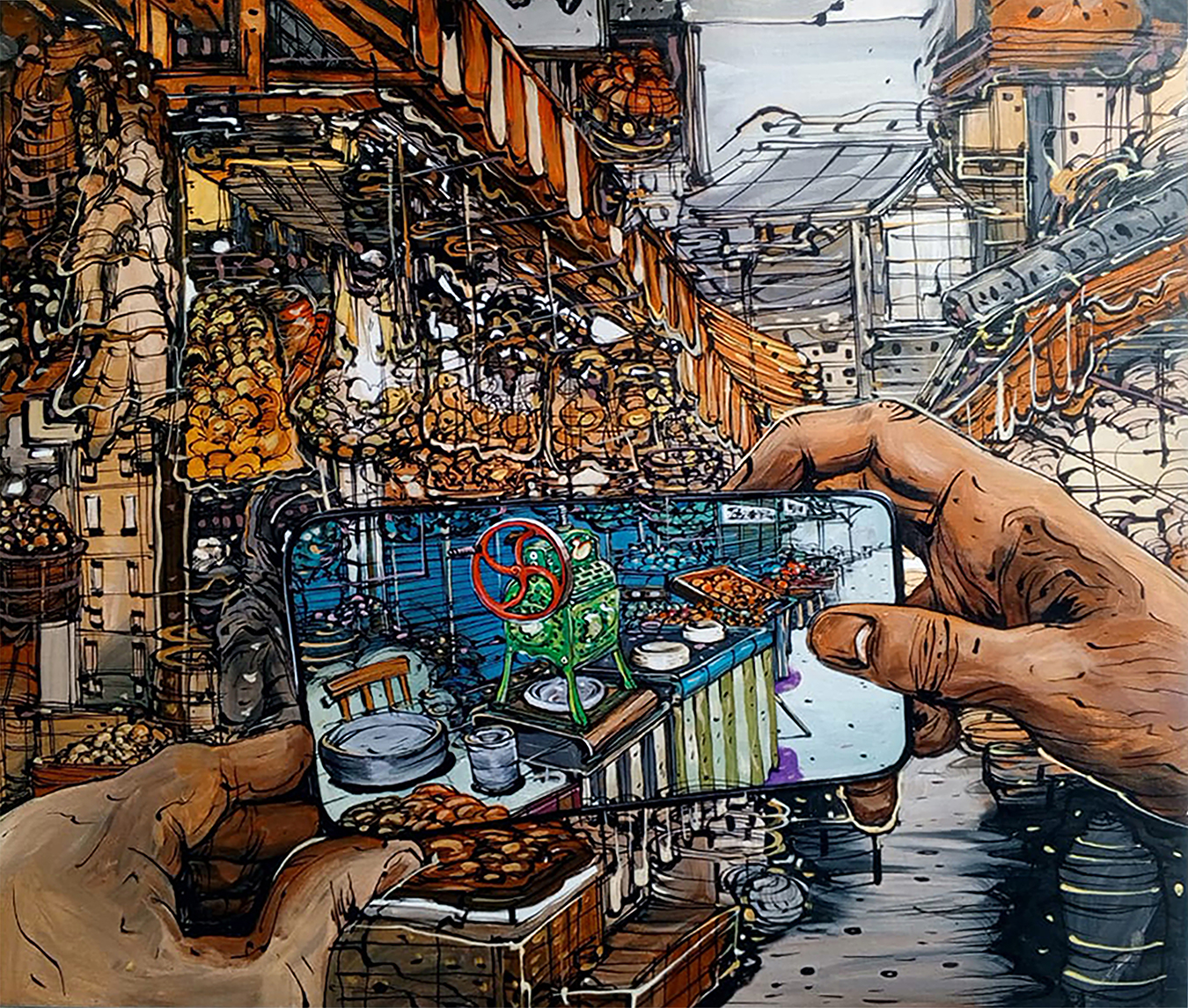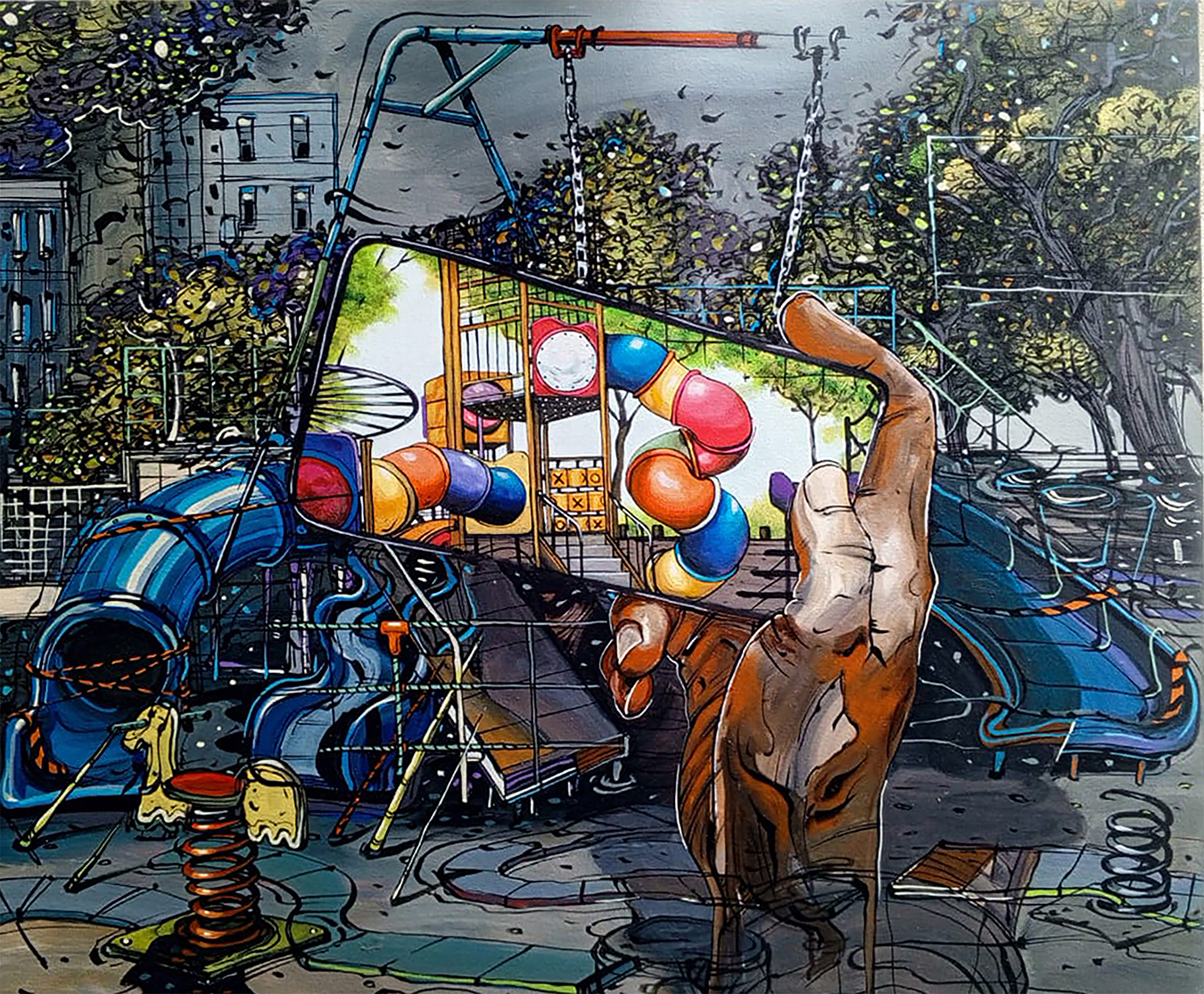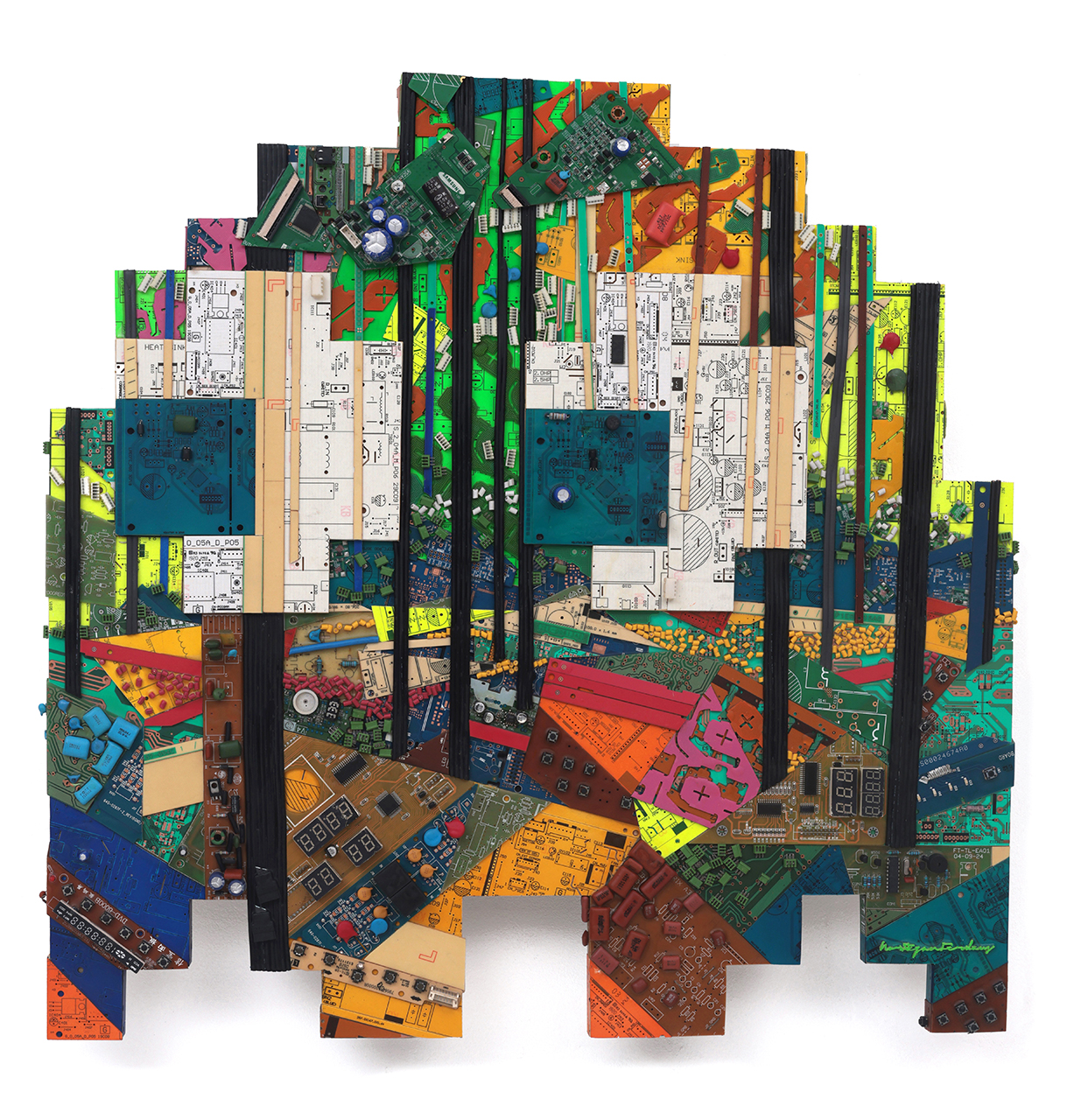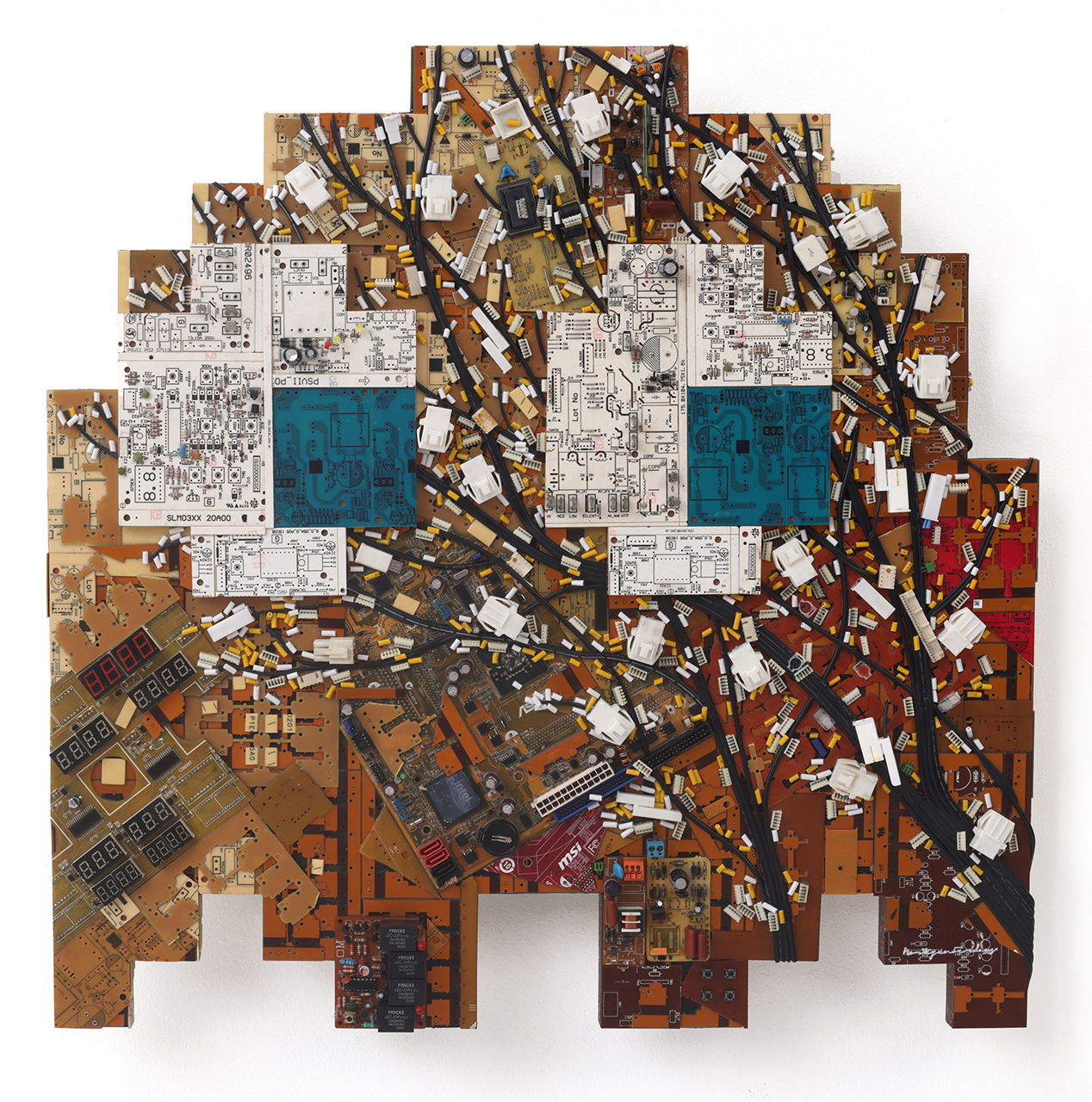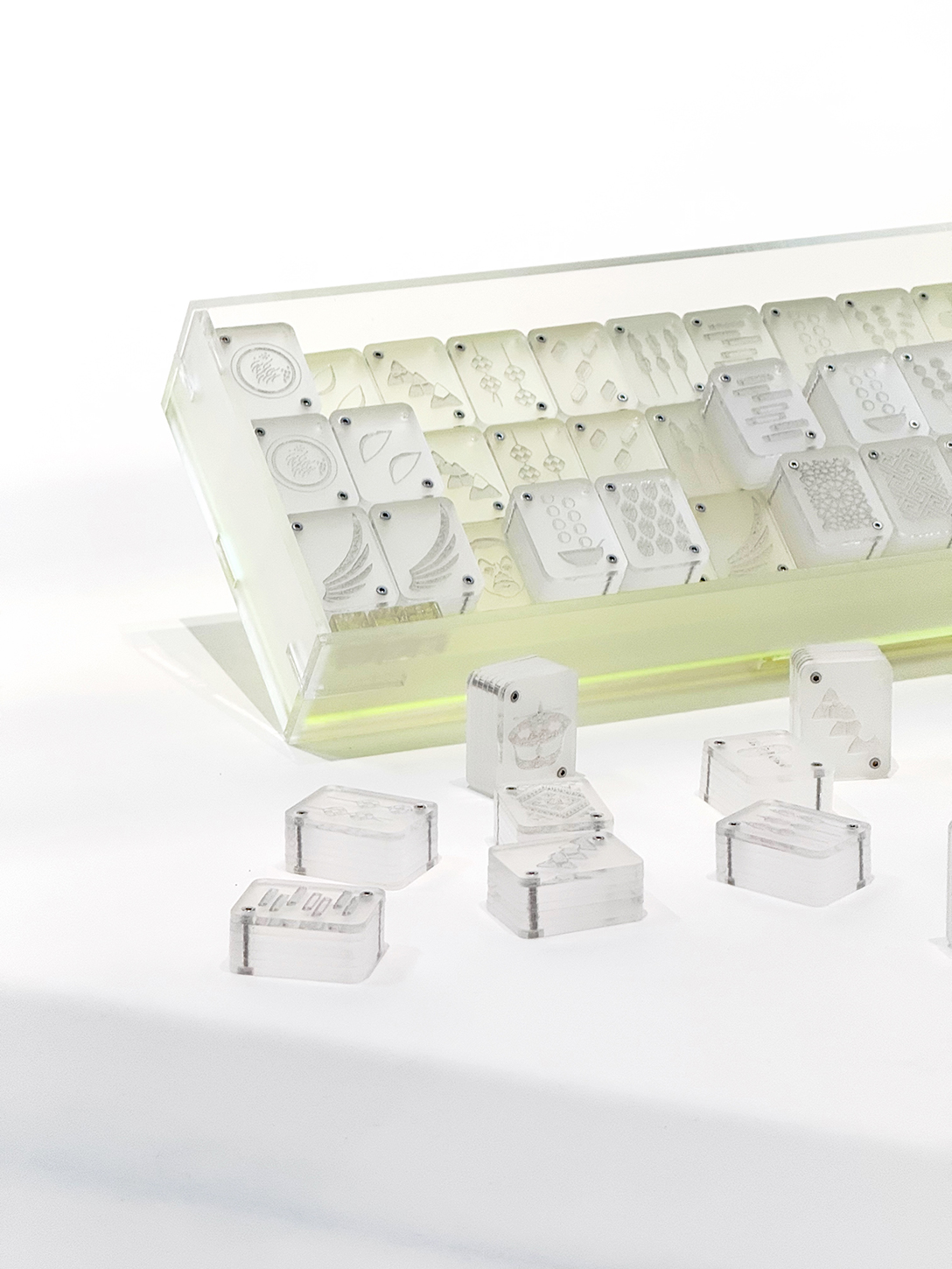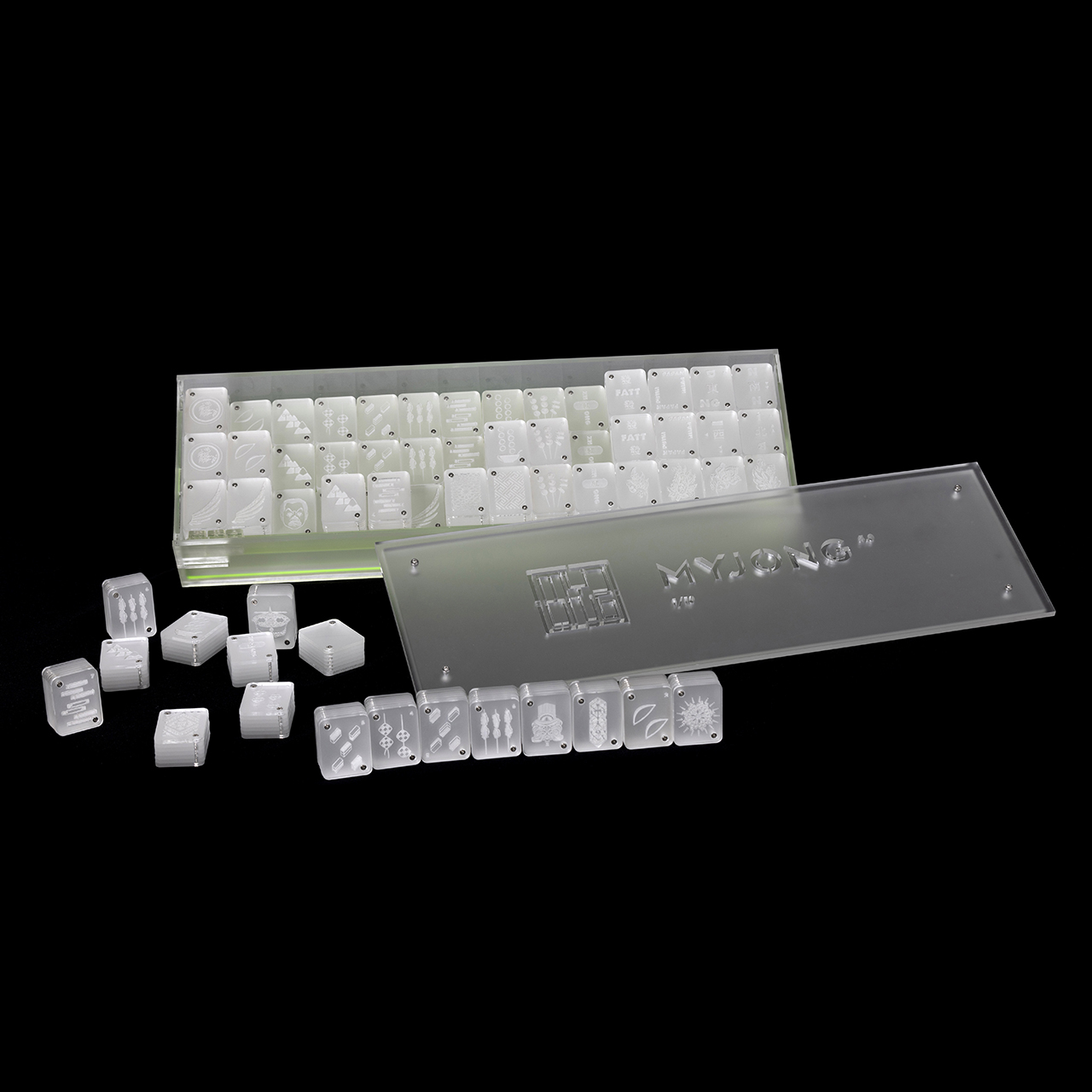WHATZ 2025
Group Exhibition:-
Anniketyni Madian
APIS
Po Oi
Sean
Tijan
Unreality Kai
V.I.P. Preview: 16th May 2025
Public Admission: 16th – 18th May 2025
Room 932, 9F, Sheraton Grand Taipei Hotel, Taipei City, Taiwan
*Click on images to zoom in
在地根源・全球共鳴:馬來西亞當代藝術新浪潮
馬來西亞當代藝術正自信地邁向國際舞台,由新一代藝術家推動,其創作實踐反映出國家的多元文化脈絡、流動的身份認同以及蓬勃的創意視野。
其中,Anniketyni Madian 深受砂拉越族群文化啟發,將傳統的「Pua Kumbu」織品語彙轉化為層次細膩的木雕作品,在工藝與當代設計之間建立對話。APIS 探索非常規材料與概念性形式,邀請觀者從物質與象徵兩個層面重新思考藝術的意義。Po Oi 則以強烈的色彩、符號語言與情感厚度為作品注入個人生命經驗,展現對身份與自我價值的深層凝視。他的第三場個展《I AM PO OI 3.0》於 2025 年 Art Central 香港展出,為馬來西亞藝術在國際藝博會上的能見度寫下重要里程碑。Sean 以極簡的人像語彙細緻描繪人性中的脆弱與靜默情感;Tijan 則透過抽象構圖編織記憶、環境與自我省思之間的交錯軌跡。橫跨數位與文化疆界的 Unreality Kai(Kaiyi Wong)創作多媒體作品,融合賽博美學與馬來西亞圖像語言,建構出另類現實與未來的想像。這一世代的藝術家以大膽、細膩且具有全球共鳴的創作實踐,共同構築出馬來西亞當代藝術的多元聲音。他們的作品不僅映照出國內豐富的文化風貌,也積極對話國際觀眾,彰顯馬來西亞在全球當代藝術語境中的嶄露頭角與持續拓展。
From Local Roots to Global Resonance: The New Wave of Malaysian Art
Malaysian contemporary art is stepping confidently onto the global stage, propelled by a new wave of artists whose practices reflect the nation’s rich cultural tapestry, evolving identities, and creative vision. Among them, Anniketyni Madian draws from her Sarawakian heritage, transforming the traditional “Pua Kumbu” textile into intricately layered wooden sculptures that merge craft with contemporary design. APIS experiments with unconventional materials and conceptual forms, prompting viewers to engage with both the physical and symbolic dimensions of art. Po Oi infuses his work with bold color, symbolism, and emotional depth, offering intimate reflections on identity and self-worth; his third solo exhibition, “I AM PO OI 3.0”, debuts at Art Central 2025 in Hong Kong, marking a significant milestone for Malaysian representation in international art fairs. Sean articulates quiet emotion and human vulnerability through minimalist portraiture, while Tijan constructs abstract compositions rooted in memory, environment, and introspection. Bridging the digital and cultural, Unreality Kai (Kaiyi Wong) creates multimedia works that fuse cyber aesthetics with Malaysian iconography, proposing alternate realities and speculative futures. Together, these artists form a compelling collective voice for Malaysian contemporary art—bold, nuanced, and globally resonant. Their practices not only reflect Malaysia’s diverse cultural landscape, but also engage a broader international audience, affirming the country’s growing presence in the global contemporary art discourse.
- Anniketyni Madian
安妮凱蒂妮・瑪迪安(Anniketyni Madian,1986年生)是來自馬來西亞的藝術家,以融合伊班族文化的當代木雕創作聞名。她出生於砂拉越,畢業於馬來西亞瑪拉工藝大學(Universiti Teknologi MARA, UiTM),擅長將現代美學與傳統圖騰結合,尤以細緻繁複的「pua kumbu」紋樣為特色。她的作品因工藝精湛與文化內涵深厚而廣受讚譽,並曾在國內外多個重要藝廊與展覽中展出,奠定了她在馬來西亞當代藝術界的重要地位。安妮凱蒂妮透過創新的木材運用與對原住民藝術形式的堅持,架構出一種連結傳統與現代的敘事風格,啟發新一代馬來西亞藝術家以嶄新的方式探索自身文化根源。
《Fragments XS》 是一場對文化認同、傳統,以及現代化與傳承之間張力的鮮明探索。藝術家運用實木、樹脂與布料等混合媒材,編織出繁複紋樣與富動態感的構圖,向東南亞與原住民設計的豐富美學致敬,同時以當代視角重新詮釋這些文化語彙。作品中有機元素──如花卉與蝴蝶──與齒輪、零件等工業意象之間的對照,突顯出自然與工業化衝擊之間的微妙平衡,映照出傳統與現代不斷交織的時代對話。作品名稱 《Fragments XS》意指將破碎片段重新拼湊為完整敘事,象徵砂拉越文化、傳統與個人歷史交織而成的多層次身份結構。透過精緻的構成語彙,作品邀請觀者深入思考文化敘事的複雜性,以及傳統與進步之間持續變動的關係。
Anniketyni Madian (b. 1986) is a Malaysian artist renowned for her contemporary wood sculptures inspired by her Iban heritage. Born in Sarawak and a graduate of Universiti Teknologi MARA (UiTM), she combines modern aesthetics with traditional motifs, particularly the intricate pua kumbu patterns. Her work, celebrated for its craftsmanship and cultural depth, has been exhibited locally and internationally, establishing her as a prominent figure in Malaysian contemporary art. Through her innovative use of wood and dedication to preserving indigenous art forms, Anniketyni offers a compelling narrative that bridges tradition and modernity, inspiring a new generation of Malaysian artists to explore their cultural roots.
“Fragments XS” is a vibrant exploration of cultural identity, tradition, and the tensions between modernization and heritage. Using mixed materials such as hardwood, resin, and fabric, the artist weaves together intricate patterns and dynamic compositions to celebrate the richness of Indigenous and Southeast Asian design, while reimagining it through a contemporary lens. The juxtaposition of organic elements—like flowers and butterflies—with industrial motifs such as gears and cogs underscores the delicate balance between nature and the forces of industrialization, reflecting on the evolving dialogue between past and present. The title “Fragments XS” evokes the act of assembling disparate pieces into a cohesive whole, symbolizing the layered interconnections of Sarawakian culture, heritage, and personal history. Through its meticulous construction, the artwork invites viewers to engage with the complexities of cultural narrative and consider the ongoing interplay between tradition and progress.
- Apis
哈菲茲.沙希米(Haafiz Shahimi,1986年生),又名 APIS,是一位來自馬來西亞的跨領域藝術家,致力於融合版畫與行為藝術的創作實踐。自2014年以來,他便開創性地發展出受峇迪傳統啟發的火燒版畫技法,運用加熱的金屬模板將文化與神話意象印刻於畫布與麻布等材質之上。APIS 將藝術與熱力學原理結合,探索科學與神話、東方與西方、物理與哲學等二元對立之間的張力。他透過顛倒燃燒、化學處理與汽車漆等實驗性手法,將傳統與工業語彙相互交融,體現在其過往系列中。APIS 的前衛創作實踐持續突破當代馬來西亞藝術的邊界,以創新手法反思文化、重塑傳統。
當代數位文化的荒謬與現實,在 APIS 的《Bet You Wanna Slap It》系列中被幽默而尖銳地揭示。作品以大膽且諷刺的視角探討現今社群媒體的現象──在追求病毒式擴散與即時回饋的過程中,真誠的交流往往被犧牲。APIS 在此系列中直指社群媒體表演性的本質,以及在缺乏深思熟慮的環境下,所激發的衝動性與攻擊性反應。作品名稱本身既調皮又挑釁,以輕鬆的語氣吸引觀者深入探索,實則揭露當代圖像經驗如何在無止盡的滑動中被商品化與淺層化。介於反諷與內省之間,APIS 的創作邀請觀眾重新審視自身在這個高度媒體化世界中的角色──不只是觀看者,也是參與者
Haafiz Shahimi (b. 1986), also known as APIS, is a Malaysian interdisciplinary artist whose work bridges printmaking and performance art. Since 2014, he has pioneered pyrography print techniques inspired by batik traditions, using heated metal matrices to imprint cultural and mythological imagery onto materials like canvas and jute. Blending art with thermodynamic principles, APIS explores dualities such as science and mythology, East and West, and physics and philosophy. His experimental methods—including inverted burns, chemical treatments, and automotive paint—infuse traditional and industrial elements, as seen in his previous series. APIS’s boundary-pushing practice continues to redefine contemporary Malaysian art through innovation and cultural reflection.
“Bet You Wanna Slap It” series presents a bold and satirical examination of contemporary digital culture, where the pursuit of virality often outweighs genuine engagement. In this body of work, APIS provocatively addresses the performative nature of social media and the impulsive aggression often triggered in an environment driven by instant reactions and little reflection. The cheeky yet confrontational title draws viewers in with humor, while offering a deeper critique of how visual experiences are commodified in the age of endless scrolling. Positioned between irony and introspection, APIS’ work invites audiences to reflect on their roles as both viewers and participants within a hyper-mediated world.
- Po Oi
Fairuz Paisan(1981年生,馬來西亞),藝名為 Po Oi,是一位當代雕塑藝術家,以其創新運用木材與玻璃纖維創作圓形語彙的作品而聞名。他於2014年取得馬來西亞瑪拉工藝大學(MARA University of Technology)藝術與科技碩士學位,並融合傳統工藝與裝飾藝術(Art Deco)風格,創作出兼具色彩張力、象徵意涵與情感深度的雕塑作品。其創作橫跨壁掛式與立體裝置,將象徵外在美感的玻璃纖維與代表內在本質的木材並置,反思表象與真實之間的張力。
2025年,Po Oi 代表馬來西亞參與在日本大阪舉辦的世界博覽會,於馬來西亞館展出其雕塑作品,並獲得馬來西亞投資、貿易與工業部(MITI)典藏。同年,他於2025年香港Art Central藝術博覽會舉辦個展《I AM PO OI 3.0》,成為馬來西亞雕塑藝術邁向國際舞台的重要里程碑。他的作品以精湛的技術表現、文化參照與內斂的情感張力廣受好評。
Po Oi 近期創作系列《圈中之圈》與《種子》延續其對身份、記憶與個人轉化的深層探問。他運用玻璃纖維、汽車烤漆與木材鑲嵌等材料,塑造出兼具個人經驗與集體意識的雕塑形式。其中,《圈中之圈》聚焦於重複性、情感循環與包覆感;而《種子》則將種子視為內在能量的容器,承載著成長、傳承與自我覺醒的意象。這兩個系列共同展現了 Po Oi 致力於在傳統與當代之間建立對話,以細膩工藝與象徵語彙構築出兼具沈思與視覺張力的敘事風格。
Fairuz Paisan (b. 1981, Malaysia), known as Po Oi, is a contemporary sculptor known for his innovative use of circular forms in wood and fiberglass. A Master’s graduate in Fine Art and Technology from MARA University of Technology (2014), Po Oi blends traditional craftsmanship with Art Deco influences, creating works rich in color, symbolism, and emotional depth. His sculptures—ranging from wall-mounted to free-standing—pair fiberglass, representing external beauty, with wood, symbolizing inner essence, reflecting on the contrast between appearance and reality..
In 2025, Po Oi represented Malaysia at the World Expo in Osaka, exhibiting under the Malaysian Pavilion, with several of his works acquired by the Ministry of Investment, Trade and Industry (MITI). That same year, his solo exhibition “I AM PO OI 3.0” at Art Central Hong Kong marked a major step forward for Malaysian sculpture on the international stage. His work is recognized for its technical precision, cultural references, and quiet emotional resonance.
Po Oi’s recent series, Circle Within a Circle and Seeds, expand his exploration of identity, memory, and transformation. Using fiberglass, automotive paint, and inlaid wood, he creates sculptural forms that speak to both personal and collective experience. While Circle Within a Circle delves into repetition and emotional cycles, Seeds imagines growth and heritage as internal forces. Together, these works reflect Po Oi’s ongoing commitment to crafting thoughtful, visually compelling narratives that bridge tradition and contemporary culture.
- Sean
胡辛・奧斯曼(Husin Othman),藝名 Sean,是馬來西亞當代藝術家,其創作實踐植基於記憶、身份與文化延續的探討。2013年自馬來西亞瑪拉工藝大學(UiTM)美術系以優異成績畢業,Sean 的靈感深受其在霹靂州鄉村、與七位兄弟姊妹一同成長的童年經歷所啟發。他以富感染力的人物描繪與懷舊視角捕捉日常生活場景,細膩呈現馬來文化的價值與傳統,展現馬來西亞生活的精神面貌。2014年,他獲得馬來西亞UOB年度繪畫獎「最具潛力藝術家」殊榮,奠定其於藝壇的嶄露頭角。
2024年,Sean 受邀參加於中國桂林舉辦的首屆《和諧共融:中馬藝術交流展》,該展旨在透過當代藝術促進跨文化理解與交流。作為馬來西亞新銳藝術家代表之一,他的參與凸顯其在推動區域藝術對話中的積極角色。其作品亦獲桂林美術館典藏,彰顯其在跨國當代藝術脈絡中的共鳴,並鞏固其作為東南亞當代藝術關鍵聲音的地位。
這件作品彷彿是一幅記憶的框架,捕捉了藝術家生命中曾經存在的一個場域。它呈現出過往仍在記憶中呼吸的片段——每個街角、每條斑駁的巷弄、每處曾充滿聲音與故事的空間。即便現實中的場所隨著時間逐漸褪色,作品卻以兩種對比的維度將其重現:一為逐漸衰敗的現實,另一則是經過理想化記憶重構的數位幻景。此作激起一種懷舊情感,也許是對童年片段或過往未曾察覺的美感的追憶,如今透過科技的視角重新詮釋。作品揭示了現代生活的諷刺:一方小小的螢幕能夠改變觀看的角度,掩飾瑕疵,塑造一種從未真正存在的美好。畫面中,一邊是灰暗、雜亂的現實世界——擁擠的市集、靜默斑駁的街道、在時光中破敗的遊樂場,以壓抑的色彩與銳利的線條呈現;而在螢幕內,一切卻顯得繽紛、有序與理想化,隱喻著數位美學如何遮蔽現實,並重塑我們記憶中的過去。
Husin Othman, known professionally as Sean, is a Malaysian contemporary artist whose practice is rooted in memory, identity, and cultural continuity. A graduate with honors in Fine Art from UiTM in 2013, Sean draws upon his upbringing in rural Perak—where he was raised alongside seven siblings—as a wellspring of inspiration. His evocative figurative works capture the spirit of Malaysian life through nostalgic portrayals of everyday scenes, reflecting the values and traditions of Malay culture. In 2014, Sean was recognized as Malaysia’s Most Promising Artist with the UOB Painting of the Year award.
In 2024, he was invited to participate in the inaugural Harmony Unity: China–Malaysia Artwork Exchange Exhibition in Guilin, China—an initiative aimed at fostering cross-cultural understanding through contemporary art. Representing Malaysia among a curated selection of emerging voices, Sean’s inclusion highlighted his growing role in shaping regional artistic discourse. His work was acquired into the permanent collection of the Guilin Art Museum, underscoring his resonance within the broader transnational art landscape and affirming his position as a vital voice in Southeast Asian contemporary art.
This artwork serves as a frame of memory, capturing a place that was once part of the artist’s life. It reflects a past that still breathes in memory—every street corner, every worn-out alley, every space once filled with voices and stories. Though the physical location may have faded with time, the work presents it in two contrasting dimensions: a decaying reality and a digitally enhanced version, shaped by idealized memory. The piece evokes nostalgia, perhaps of childhood moments or unnoticed beauty, now reimagined through the lens of technology. It portrays the irony of modern life, where a small screen can transform perception—hiding flaws and crafting beauty that never truly existed. On one side, the real world appears dark and disordered—crowded markets, silent rusty streets, and abandoned playgrounds rendered in muted tones and harsh lines. Yet within the screen, everything is vibrant, orderly, and idealized, suggesting how digital aesthetics can mask reality and reshape how we remember the past.
- Tijan
諾・蒂贊・菲達斯(Nor Tijan Firdaus,1986年生),簡稱 Tijan,是馬來西亞當代藝術家,以其在混合媒材創作中巧妙運用電子廢棄物而廣受矚目。擁有美術背景的她,擅長將被丟棄的科技產品轉化為細緻且具深度的藝術作品,挑戰傳統對美與價值的定義,同時揭示消費文化對環境所造成的衝擊。Tijan 的創作實踐,使她成為馬來西亞生態意識藝術的重要代表人物,並透過展覽、獎項及與環保組織的合作,獲得廣泛肯定。她的作品不僅展現技術與概念的高度整合,更啟發社會對永續議題的關注,影響新一代藝術家思考創作與環境之間的關聯。
Tijan 的《Amaran(警告)》系列,是她近期於 Core 當代藝術畫廊舉辦個展《Seek》的有力視覺延伸。這兩個系列的作品皆圍繞記憶、科技與環境惡化的交會點進行探討。《Seek》邀請觀者反思數位文化如何重塑記憶與感知,而《Amaran(警告)》則透過由電子廢料構築的繁茂卻帶有人工氣息的熱帶景觀,直觀地警示消費主義所隱藏的代價。畫面中交錯的黃色警示條紋,如同數位訊號干擾或危險警戒線,打破視覺結構,象徵自然與社會秩序的斷裂。這些作品揭示出「被美化的景象」如何掩蓋生態崩解的現實,並將被丟棄的電路零件轉化為既具詩意又緊迫的視覺評論。《Amaran(警告)》可視為《Seek》所開啟內省之旅的具象延伸,深刻映照出我們在這個被科技過度操控、卻對環境持續忽視的世界中所扮演的共犯角色。
Nor Tijan Firdaus (b. 1986) or known as Tijan is a Malaysian contemporary artist known for her innovative use of electronic waste in mixed media art. With a background in Fine Arts, she transforms discarded technology into intricate works that challenge conventional notions of beauty and value, while highlighting the environmental impact of consumerism. Her practice has positioned her as a leading voice in eco-conscious art in Malaysia, earning recognition through exhibitions, awards, and collaborations with environmental organizations. Tijan’s work not only showcases technical and conceptual depth but also inspires broader conversations on sustainability, influencing a new generation of environmentally aware artists.
Tijan’s Amaran (Warning) series serves as a compelling visual extension of her recent solo exhibition, Seek, with both bodies of work interrogating the intersection of memory, technology, and environmental degradation. While Seek invites viewers to reflect on how digital culture reshapes memory and perception, Amaran (Warning) issues a direct visual warning—through lush yet artificial tropical landscapes constructed from e-waste—about the hidden costs of consumerism. The use of caution-striped elements disrupts the compositions like digital glitches or hazard tape, symbolizing ruptures in both nature and society. Together, the works explore how curated beauty can mask ecological decay, transforming discarded circuitry into poetic yet urgent commentaries. In this way, Amaran (Warning) becomes the material consequence of the introspective journey initiated in Seek, offering a vivid meditation on our complicity in a world increasingly shaped by technological excess and environmental neglect.
- Unreality Kai
黄凯毅 《Kaiyi Wong》,藝名 Unreality Kai,是一位來自馬來西亞的建築師、設計師及數位藝術家,專注於現實與虛擬領域的交匯點。他是 Unreality Studio 的創辦人,專精於建築設計、數位藝術及產品設計,並曾創作出一款木製麻將套件。他的作品旨在挑戰傳統觀念,並鼓勵探索新的設計可能性。凱毅與藝術家如 Red Hong Yi 合作過,並參與了如“月光龍”在吉隆坡白沙街的裝置藝術等項目。他創新的設計理念,持續對馬來西亞當代藝術與設計的發展做出貢獻。
《MyJong》是一場對麻將的文化再想像,突破其過去作為馬來西亞華人社群專屬遊戲的刻板印象,轉化為彰顯馬來西亞多元文化身份的嶄新象徵。此計畫透過視覺敘事與符號再詮釋,融合馬來、印度與原住民的文化元素,挑戰既有的文化界線,重新定義傳統為一種開放且持續演化的集體敘事。《MyJong》不僅是對文化傳承的致敬,更是一場對共融身份的前瞻性宣言——文化並非靜止不變,而是流動的、共享的、持續轉化的。
Kaiyi Wong, known as Unreality Kai, is a Malaysian architect, designer, and digital artist who explores the intersection of reality and virtual realms. As the founder of Unreality Studio , he focuses on architectural design, digital art, and product design, including creating a mahjong set out of wood . His work aims to challenge perceptions and encourage exploration of new design possibilities. Kaiyi has collaborated with artists like Red Hong Yi and participated in installations such as “Moonlit Dragon” at Petaling Street . His innovative approach continues to contribute to the evolving landscape of contemporary art and design in Malaysia
MyJong is a reimagining of mahjong as a shared cultural experience, transforming its perception from a game predominantly associated with the Chinese Malaysian community into a vibrant symbol of Malaysia’s multicultural identity. By integrating Malay, Indian, and Indigenous motifs through visual storytelling and symbolic reinterpretation, the project challenges cultural boundaries and redefines tradition as an inclusive and evolving narrative. MyJong stands as both a tribute to the richness of heritage and a progressive statement on collective identity—where culture is not static, but open, fluid, and shared.
